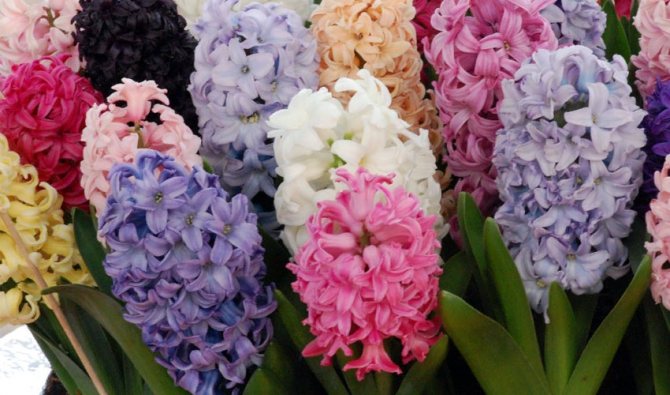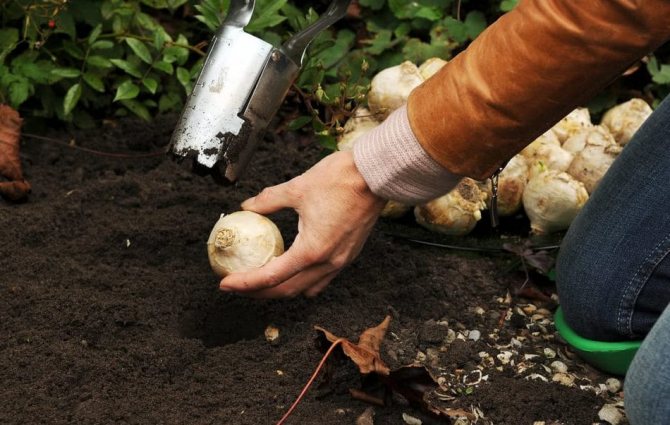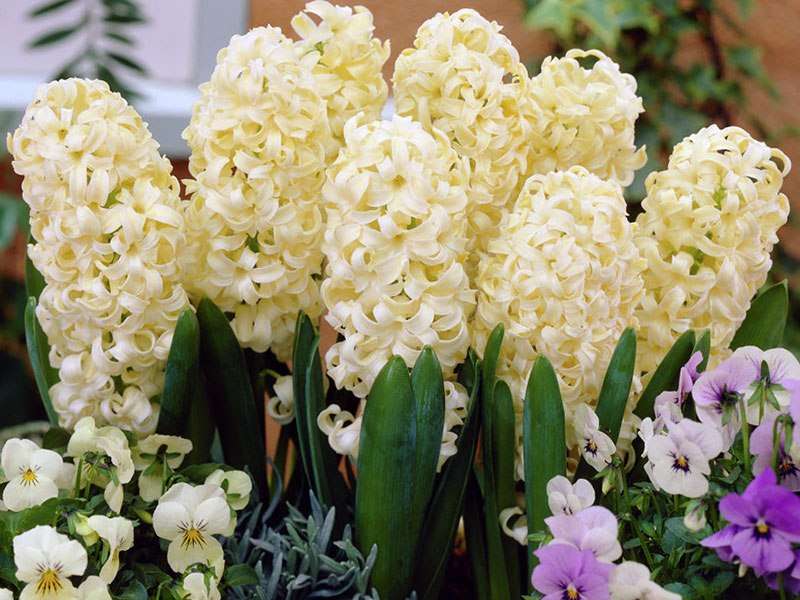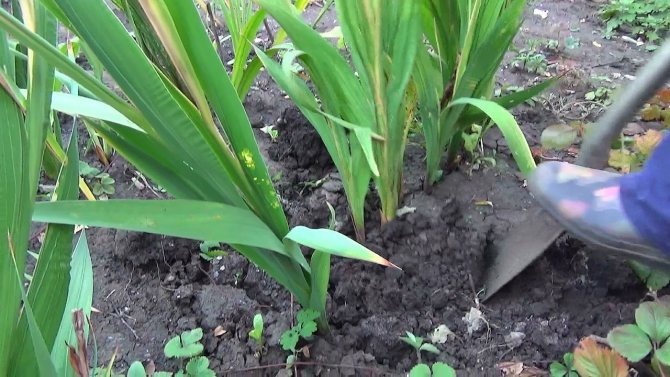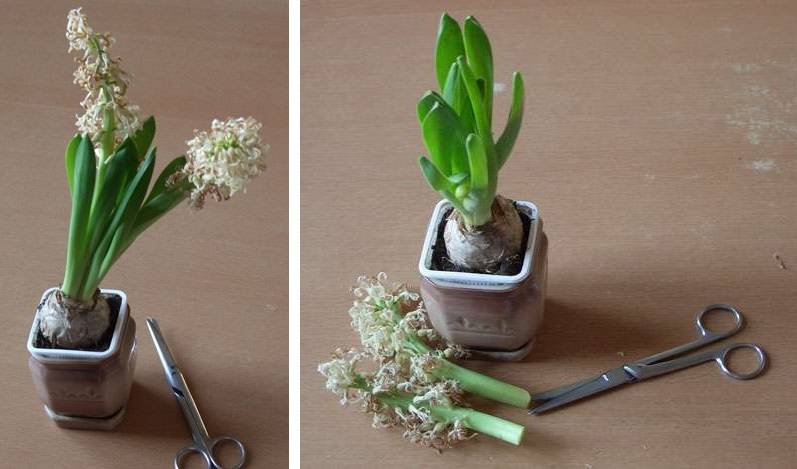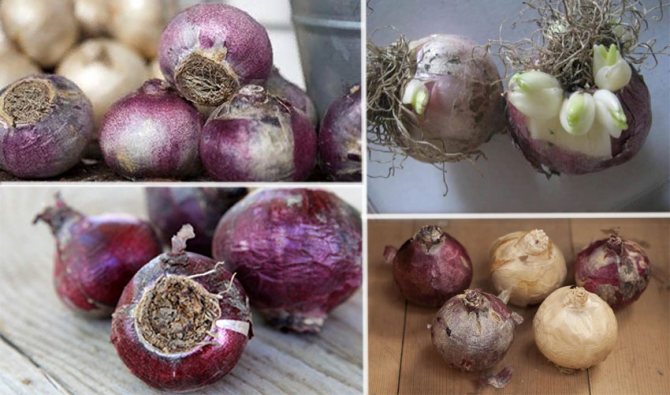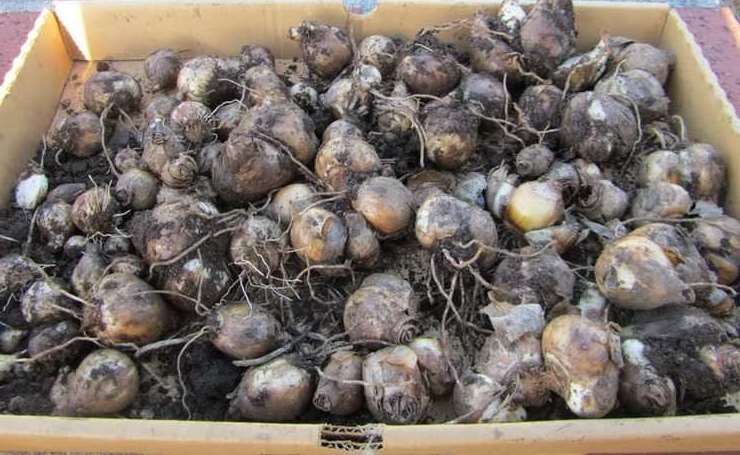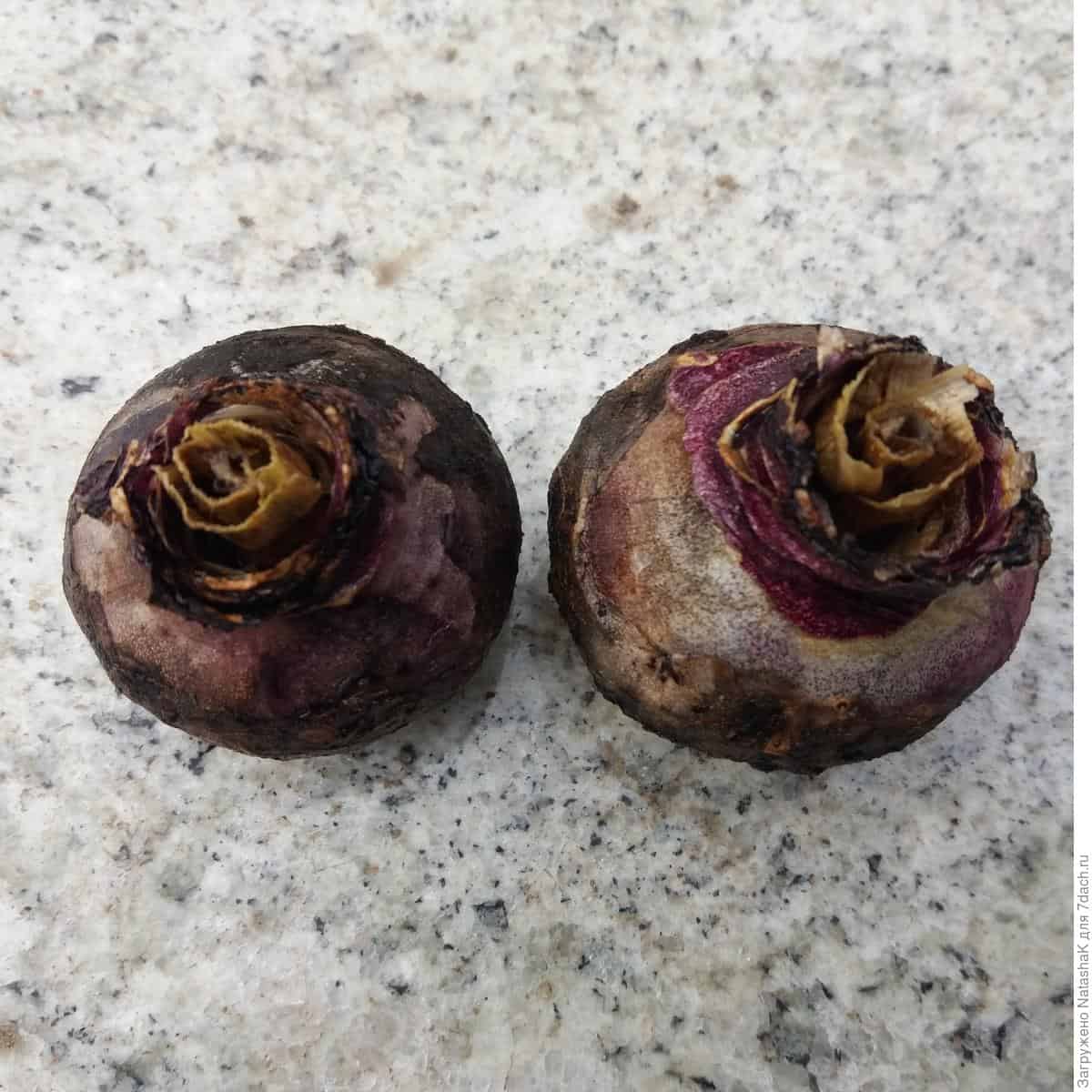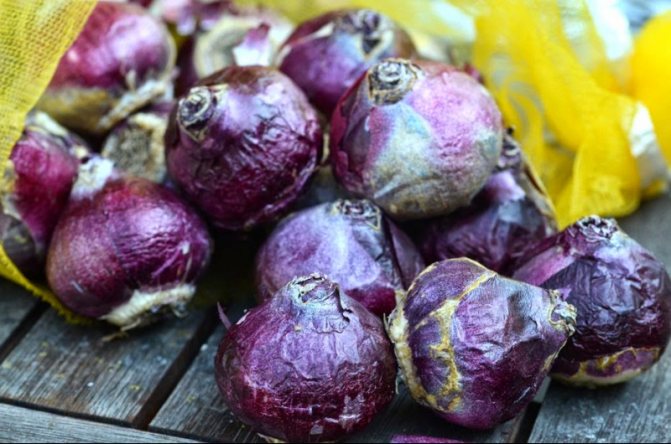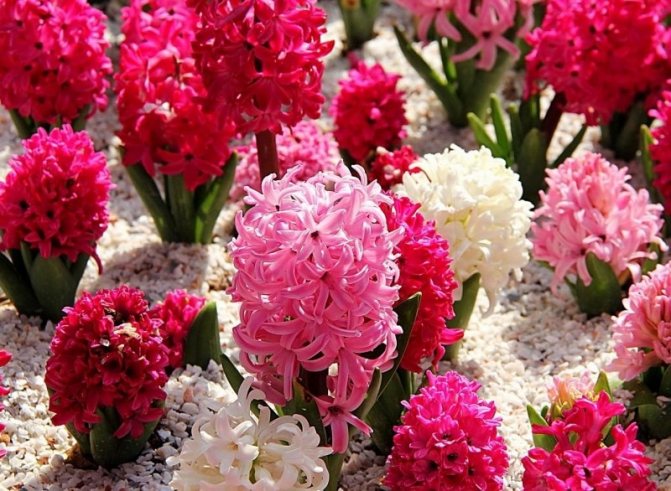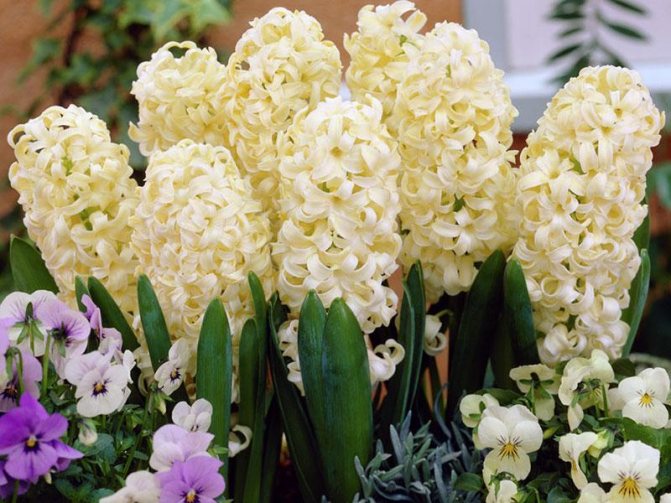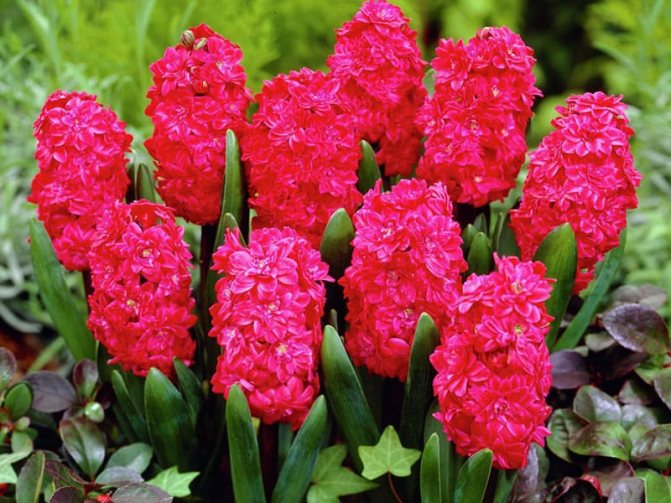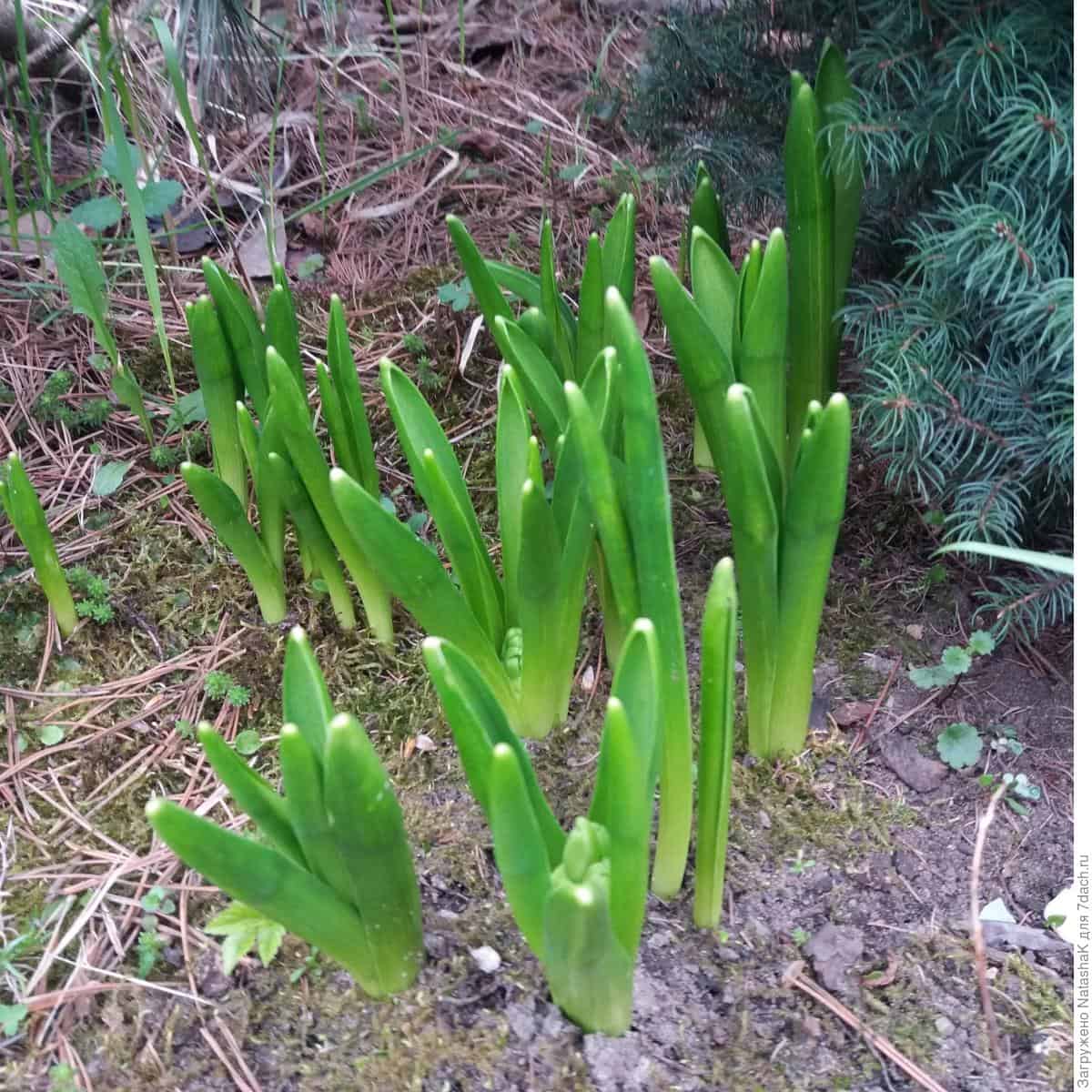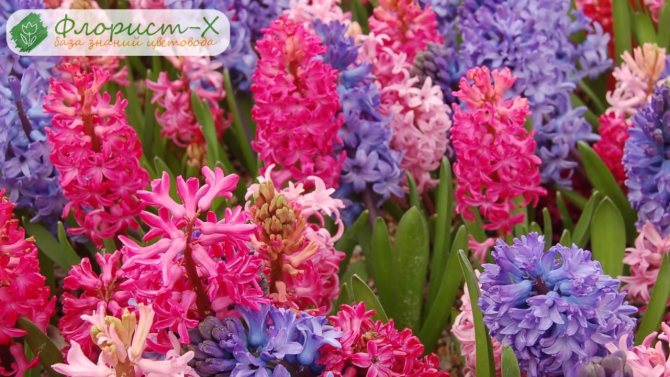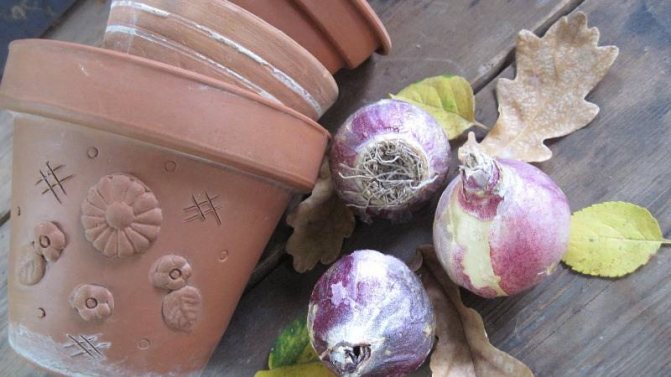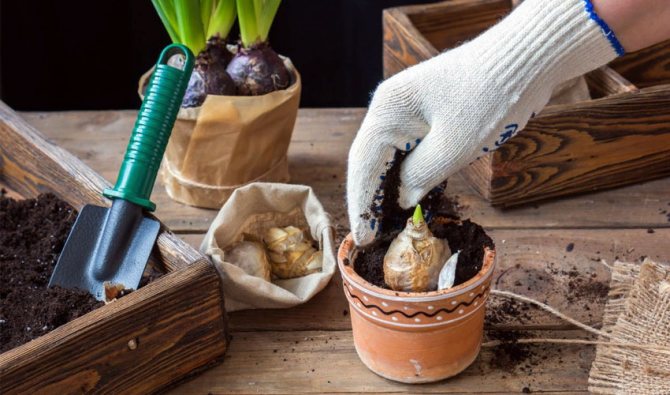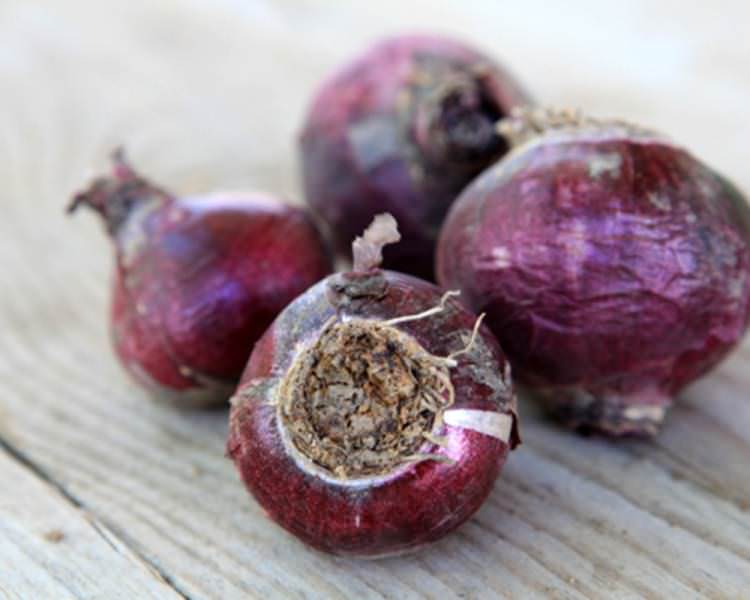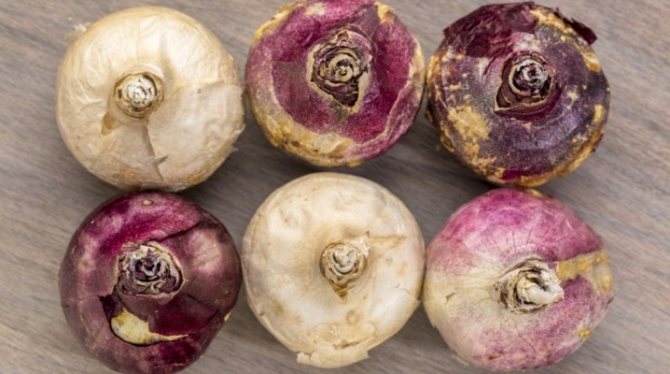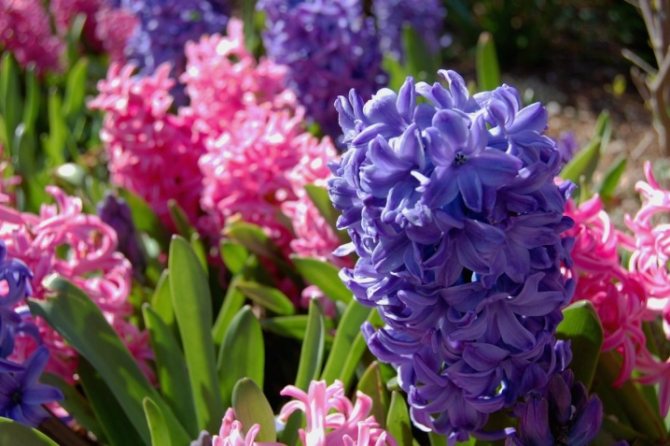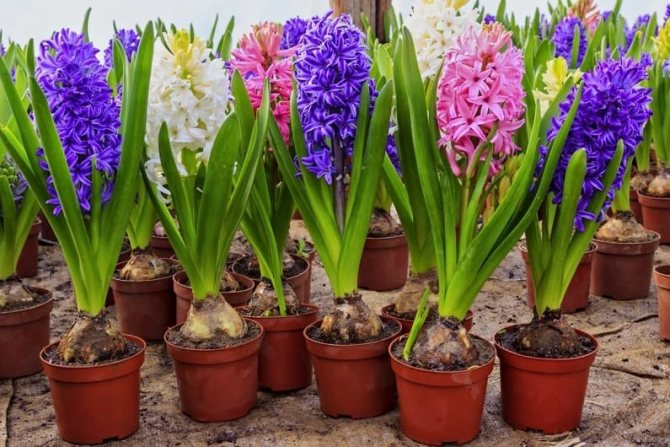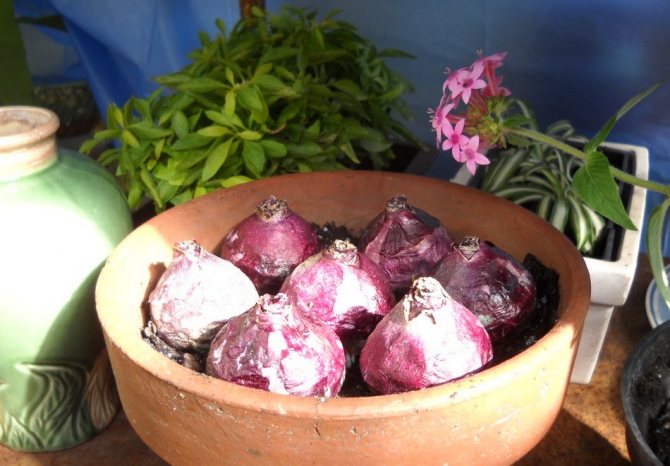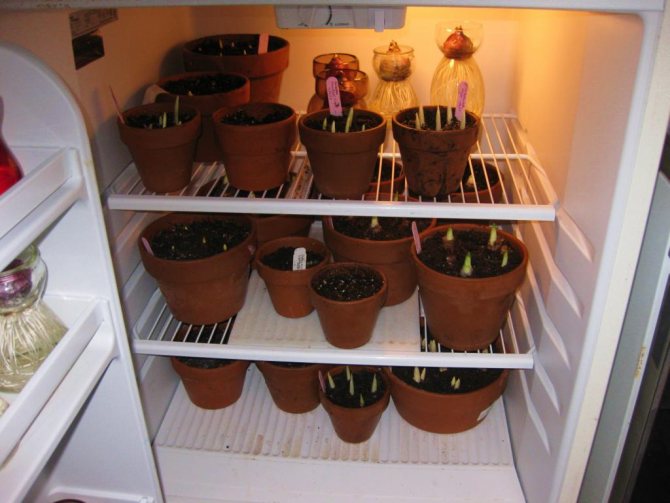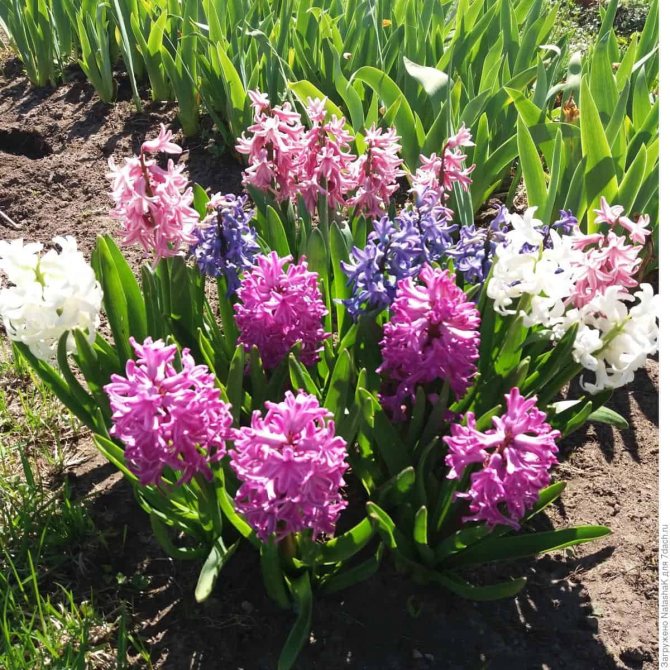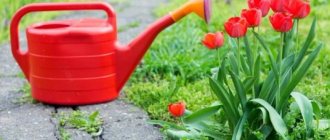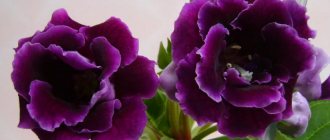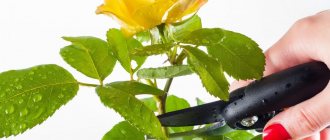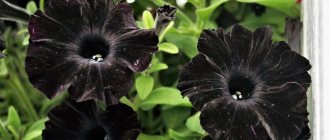If the deadline has come, and the hyacinth has faded, what to do with the bulb after that, and which option for its further use is best to give preference to? Before using the material, you need to understand this issue so that there are no problems with its safety and restoration. If there is a desire to buy a new onion next year, then the old one can be thrown away.
When thinking about what to do with hyacinth bulbs after flowering, it is necessary to study the main characteristics of these plants. Distilling them is simple enough. A gift to a woman on March 8 of one of the varieties of this flower in a pot, for example, Rigo or Delft blue, is quite common. To enjoy the flowers before the holiday on March 8, the bulbs are put on forcing in mid-November-early December.

Early species such as Pink Pearl, as well as Bismarck, Marie, Miosotis, General Kohler, Lord Balfour, Innosans have a period of forcing just over 20 days, so they bloom faster. In late varieties, the forcing period is slightly less than a month. The hyacinth blooming in the garden is a real gem.
Late plants include Blue Sapphire, the dense inflorescence of which is strewn with a large number of blue bells. Hyacinth is able to attract and bewitch the eye not only with its captivating color, but also with its light aroma. The plant is about 25 cm tall and starts flowering in April.


Leave in the ground or not
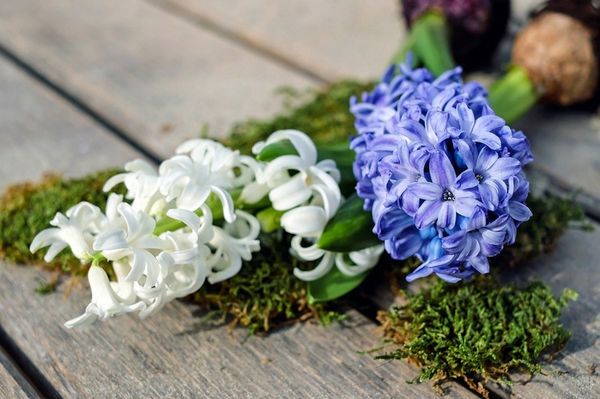

Novice florists often have a question whether it is necessary to dig up hyacinths for the winter. The answer is unequivocal: yes. There are several reasons for this:
- The homeland of hyacinths is the southern countries, and therefore the thin peel on their bulbs is not designed to protect against moisture. During the dormant period, when they stop consuming water for food, even a slight dampness due to ordinary rain can lead to decay and death of the plant.
- Mice are happy to feed on hyacinth bulbs.
- The mother's bulb can throw out several small weak babies, which will die and thereby lead to the decay of the entire plant.
- Even if the hyacinth survives the winter, the re-flowering will be inexpressive and meager, and the plant itself will be weakened and painful. At the same time, rest outside the soil increases the immunity of this flower and strengthens its strength.
- After digging, the bulb can be inspected and, if necessary, cleaned of children or rotten areas.
Leaving hyacinths in the ground is possible only in the southern regions. In this case, it is only important to plant the children in a timely manner so that they do not thicken the planting - this harms the flowering.
Optimal digging time
Now let's find out when to dig up hyacinths. It is believed that the best time for harvesting is late June or early July. However, depending on the region or the weather, this period may shift, so it is best to focus on the appearance of the plant itself. If the leaves of the hyacinth are completely yellow and withered, then it's time to dig it up. You should not wait for the moment when the above-ground part completely collapses and decays - in some cases it will be problematic to find the bulb after that. However, note that you should not rush to harvest the still green plant: in the period between the end of flowering and the complete wilting of the leaves, hyacinth just accumulates useful substances for the new season. If you dig up a bulb with partially green leaves, it will be emaciated and will not bloom next spring or will form few buds. In addition, there is a risk of injury to living roots, which will lead to physiological or infectious diseases. Moreover, this applies to plants that have not yet had time to finally bloom.During this period, the hyacinth needs to be properly cared for. Immediately after the flowers wither, the peduncle is cut off with a knife or scissors (carefully so as not to damage the leaves). the shower is reduced, but not completely stopped. At this time, it is recommended to feed the hyacinth with superphosphate and potassium sulfate. Nitrogen fertilizing is not applied. This rule must be observed even if you keep hyacinths in the apartment. Although they are not threatened by excess moisture or rodents, a properly organized dormant period will make new blooms more abundant. True, at home, the growing season lasts longer and complete wilting occurs at the end of July. After the end of flowering and before harvesting, it is advisable to rearrange the flower in a slightly cooler place, shaded from direct sunlight.
How to dig it right
The bulbs are simply shaken out of the pot.
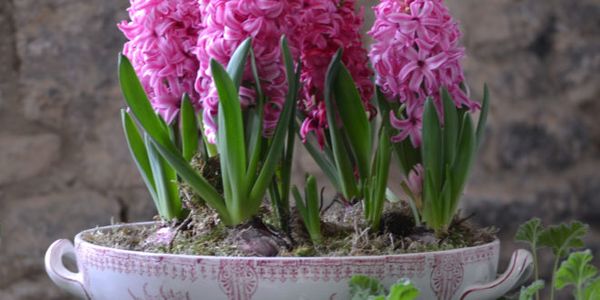

They are dug out of open ground using a pitchfork or a bayonet shovel. This should be done in dry, clear weather. It is advisable to dig deeper so as not to hook the onions themselves. Check that there are no children in the soil.
Shake the removed onions from the ground. If it is a little damp, do not rush to clean it so as not to damage the outer shell - let it dry first. Cut off the wilted leaves.
Before storage, the bulbs are dried for about 5 days in a dry, shaded, well-ventilated area. After that, they are examined a second time. This time, the remnants of roots and dry husks are cleaned off, and the babies are separated from the mother's bulbs. Finally, the planting material is stored away.
How to dig up bulbs correctly
When digging out the bulbs, you should work extremely carefully, carefully choosing them with a fair amount of soil, while trying to negate damage to even very tiny, seemingly insignificant roots.
Hyacinths, like other bulbous ones, are dug up, following the generally accepted rules:
- Digging begins only in dry, clear weather.
- Digging is carried out with an ordinary bayonet shovel or with a simple pitchfork, while prying all the soil deeper, to the level of the bulbs directly.
- All bulbs, both small and large, are selected from the ground. The soil must be carefully checked for small children.
- If the soil is still rather damp and surrounds the bulbs too tightly, do not remove it immediately after digging. Only the already dried soil can be removed carefully.
The hyacinth has faded in the pot, what should I do next?
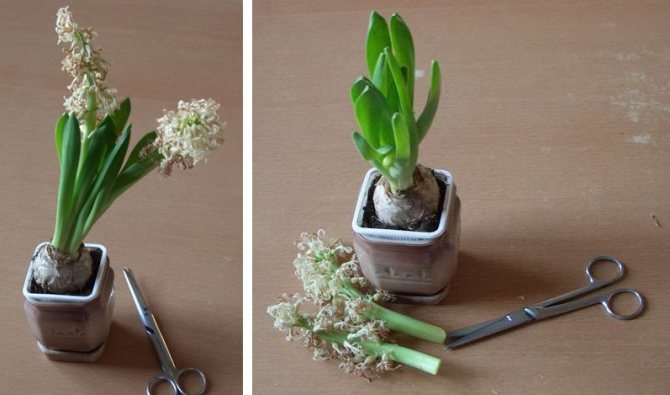

As a rule, hyacinth, bought in a store in a special small pot and timed to coincide with any holiday, does not become an item of care and is thrown away after flowering. But you can do it differently. How? For example, try to preserve the hyacinth bulb (not the hyacinths themselves) after flowering in pots at home by carefully performing the following operation.
After flowering in a pot with a faded peduncle and still green, but wilting leaves, hyacinth is pulled out of the store container, not bothering much with possible damage to the root system, since later, during storage, the roots will still dry out and fall off themselves. We crush the earthen lump, paying attention to the external state of the bulb and the bottom at the time of decay, after which we separate the upper part.
There is nothing difficult about how to prune hyacinth after flowering at home. The green part of the plant is separated from the bulb by a shear cut or a sharp knife. The cut is made at a distance of 1 cm from the top of the bulb. The green part of the plant is thrown away, and the bulb is subjected to antifungal treatment through spraying with a solution of foundationol. If there is no foundation, it can be etched with a dark pink solution of potassium permanganate, after which the bulb must be thoroughly dried and stored in a dark, ventilated place at a temperature of 18-22 ° C.A cardboard or wooden box is ideal as a storage container, but by no means a plastic bag. Before this, each onion is wrapped with newsprint, having previously cleared of the remnants of the earth, old scales, roots and children.
This method does not save 100% of the bulbs, but for a start, if you manage to save at least half of the copies, this will be a good result.
Hyacinths, after flowering at home or indoors, are best transplanted in early autumn into open ground in the garden or in the country. o will help the plant to take root and gain enough strength for normal flowering in early spring. As a rule, this is one of the best tips, but it often happens that there is nowhere to plant the plants besides the apartment. In this case, you can, as an option, transplant the hyacinth bulbs, after flowering has ended and the plant has been at rest for at least three months, into a more spacious container at home. The container itself can be placed on a balcony or loggia, thereby bringing the growing conditions as close as possible to natural ones.
How and when to plant hyacinths
Until the fall, your planting material will gain strength. At this time, the development of hyacinth bulbs does not stop. How to keep the maximum number of them at home? You just need to follow the recommendations provided. In the meantime, you need to prepare a place for the future flower garden. This requires choosing a site with good drainage, not prone to waterlogging. In the absence of such, use high beds.
The soil is dug up and fertilized in advance. It is best to do this in advance, in the summer. Leave nitrogen fertilizers for the spring, now only potash or organic ones are needed. Rested bulbs are transferred to the flower garden in late September or early October. At the same time, exclude the planting of damaged or diseased bulbs and be sure to treat them with potassium permanganate. Large bulbs are planted to a depth of no more than 18 cm in a 15 x 15 cm pattern. The thickness of the soil above the top of the bulb should not exceed 5 cm. It is recommended to make a sand pillow under the bed. It will protect against waterlogging.
How to care for hyacinths after flowering outdoors
After the hyacinths have faded, they must be prepared for a dormant period. The correct eyeliner to this stage of care will be to remove the faded peduncle, without waiting for the appearance of ovaries with seed pods. You do not need to cut the leaves, the longer the foliage remains green, the stronger the onion becomes. After flowering, the intensity of watering is halved, and by the time the foliage dries up, it is completely stopped.
Do not forget about the last dressing, which is carried out immediately after the flowering stage. During this period (after flowering and cutting the peduncle), the bulb begins to intensively recover, gaining strength for further growth. Top dressing should contain superphosphate and potassium sulfate.
The gradual wilting of the yellowing foliage will indicate the place in the flower bed where to find the faded hyacinth for subsequent digging.
Post-flowering care
If you properly care for the plant after it has faded, there is a chance that after a while you you will be able to observe the flowering process again... So, if the hyacinth has faded, what to do with it further at home, how to care?
After flowering, many people leave the hyacinth in the pot and do not know what to do with it. However, caring for the plant after flowering is very important.
When the flowers wither and begin to crumble, peduncle cut... Leaves do not touch - let them dry out without outside interference. This will make the bulb stronger. Within a month, it is watered and fed. Further, watering is reduced, and fertilizers are no longer used.
Do you need to dig up hyacinths every year?


You don't need to dig out hyacinths every year, but leave them in the flower bed.In the natural environment, no one digs hyacinths for subsequent planting - they grow and develop well without additional human participation for up to ten or more years. Then why bother digging up hyacinths at all?
There are many reasons for digging the bulbs annually, namely:
- During digging, the bulbs are rejected and subsequently disinfected with special solutions.
- The grown children are separated, thereby increasing the seed.
- Bulbous plants rest under certain conditions and temperatures, and recent weather conditions have been unpredictable.
- The next argument in favor of digging is rodents. They love to eat root vegetables. Until the next flowering, hyacinths may simply not survive - they will eat it.
- Excavation and subsequent proper storage stimulates flowering well and the setting of flower buds.
In addition to the above, it is worth paying attention to the fact that the transplantation contributes to the preservation of the decorative qualities and varietal conformity of this or that hyacinth variety, preventing them from going into a "wild" state in which the plant begins to degenerate.
Is it possible to leave the bulbs in the ground
So, do you need to dig up hyacinths after blooming? The fact is that all early flowering bulbs (these are primarily hyacinths), after the end of their flowering, enter the stage of direct ripening of the bulb, after which the time of rest and rest comes almost immediately. During this period, the bulbs are hypersensitive to excess moisture, sudden temperature changes, and other surprises of unstable weather conditions that have been observed in recent years.
You should also take into account the possible presence of some rodents in the garden, they usually feast on hyacinth bulbs with great pleasure. For the hyacinth bulb, dampness or decay is extremely dangerous, as well as the formation of excessively small children, they cannot survive on their own in the open field, so most of them inevitably disappear.
In the middle lane, without digging, it is difficult for hyacinths to survive. Digging is also a reliable guarantee of subsequent luxurious and lush flowering, since the process of planting a flower bud requires very strict control and selection of storage conditions for the hyacinth bulb at its dormant stage. The only option that guarantees that fragrant inflorescences will delight the eye next spring is to dig up the bulbs for the summer period.
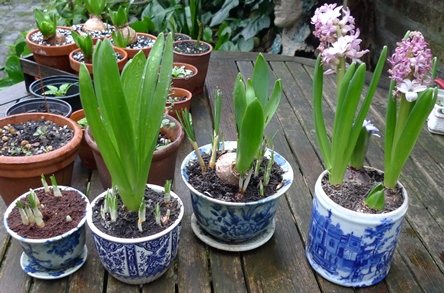

When the plant has bloomed and is resting in the open field, there is no real way to check and control the constant temperature, which is important for the dormant period. It is all the more difficult to ensure the dryness necessary for the bulbs and rid it of excessive moisture.
Do hyacinths need to be dug up after flowering in regions where it is warm in winter? Sometimes experts believe that hyacinths should not be dug up annually in these areas. However, the children formed on the bulb in any case sometimes need to be separated, otherwise the flowering may completely stop.
Hyacinths have faded, what to do with the bulbs?
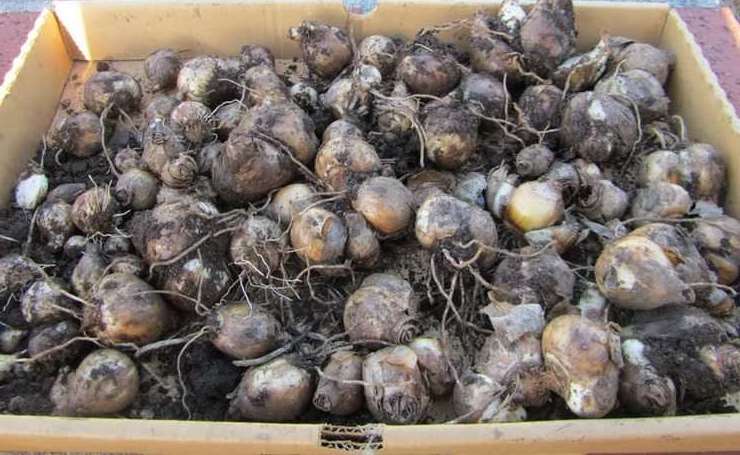

Gardeners often complain that hyacinth bulbs are not preserved until the next planting. It is useful for beginners to know the correct storage conditions and then the question of how to preserve the hyacinth bulbs will disappear by itself.
The entire storage period from excavation to autumn planting takes three months and is divided into 2 stages.
First stage
The first 5-7 days after digging, the bulbs are kept in the shade to dry completely. The optimum temperature is 20 ° C. After that, you can start cleaning the bulbs. Free them from husks, dried roots, large children, and also treat the hyacinths with a fungicide and dry them.
After the bulbs are dry, you need to put them in wooden or cardboard boxes in one layer.Some growers store the bulbs in paper bags or hanging canvas bags. Prepared boxes with hyacinths are sent to a warm place for 2 months. The optimum storage temperature is 25-26 ° C. The storage area must be well ventilated.
Second phase
During the second stage, the temperature is lowered to 17-18 ° C. When storing bulbs, the main thing is not only temperature, but also humidity. Its optimal value should be in the range of 45-60%. Deviation from the norm will lead to drying of the bulbs. During storage, it is necessary to regularly check the condition of the bulbs: turn over, sort out the damaged specimens, separate the babies that have appeared.
All articles about hyacinths on the site can be read by following this link ...
Three months later, in the fall before the first frost, hyacinths are ready for planting in open ground. To prevent freezing, the planting site is covered and covered with a mat of fallen leaves.
Diseases
What diseases are hyacinths susceptible to? Flower bulbs are of course the most vulnerable, especially when we need to store them in suitable winter conditions until next season.
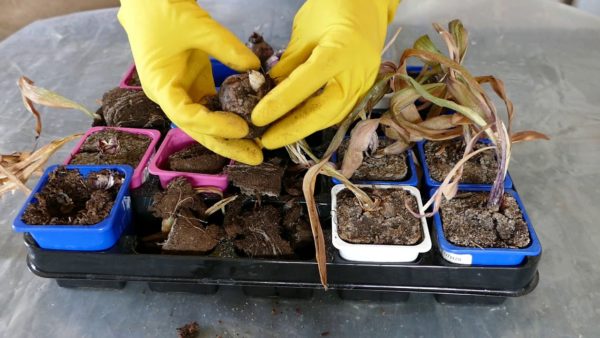

The greatest threat to hyacinths is posed by:
- Penicilliosis, a type of fungal disease that affects bulbs stored in a place with high humidity. It is characterized by a bluish dusty coating on the surface of the bulbs. The fungus spreads very quickly, and in these cases the infected bulbs must be burned.
- Gray mold that usually starts on the side of the bulb. As the name suggests, the symptom is a gray dusty patch. This disease can be prevented by treating hyacinths with a suitable preparation that can be purchased from the store.
- Wet bacterial rot is characterized by small brown spots that rapidly increase in size. It causes the bulbs to rot. Pathology is accompanied by a very unpleasant odor. Infected bulbs must be thrown away, and the rest must be treated with chemicals before planting.
How to store hyacinth bulbs?
The efficiency of growing hyacinths depends on compliance with the rules for storing the bulbs, since it is during this period that the inflorescences are laid. Delay in digging results in poor flowering. The entire storage period of the bulbs lasts approximately 95 days.
Before storage, the bulbs must be dried at a temperature of 20-22 ° C, having previously removed the remnants of the soil and excess scales. Particular care should be taken when removing scales, under which there may be children. The bulbs are dried in a semi-dark room with good ventilation.
Prepared hyacinth bulbs are laid out in boxes, but no more than two rows. Small shoots should not be separated. If hyacinth bulbs are few in number, they can be stored in paper bags labeled by variety. Further, the bulbs are stored, dividing all operations into two stages:
- first, they should be dried at a temperature of 25-26 ° C, keeping in such conditions for about 2 months;
- at the last stage of storage, lasting 1 month, the bulbs are kept at a temperature of 17-18 ° C, the humidity should not be low, otherwise the bulbs will dry out.
If the first stage is shortened by a week, the bulbs should be kept indoors at a temperature of about 30 ° C. At the same time, good air ventilation is provided. If the stored hyacinth bulbs are planted for the winter, they are taken out to a cold room a few days before planting. This allows the bulbs to adapt better to new conditions. It is important that the room where the hyacinth bulbs are stored is humid, the air is constantly supplied with fresh air.
Flowering time
The growing season is coming early spring or closer to early summer... It takes 1-2 weeks to pasture the buds. Flowering occurs in April-May. First, the blue inflorescences bloom, then pink, lilac, white and red. The latest ones are orange and yellow.
Many are interested in the question of how much hyacinths bloom at home? They do not delight with their fragrance for long - from 1 to 4 weeks... During this time, the flower brush grows and doubles.
How to store hyacinth babies?
While cleaning the dug out hyacinth bulbs, babies can be found under the scales. They can be preserved, grown up and quality planting material can be obtained. Usually, many small children form around the bottom of an adult hyacinth bulb. They are separated, dried, and then planted in pots. It will not work to store babies as adult bulbs, since they will simply dry out.
It will take about 4-5 years to grow hyacinth babies. For several years, these bulbs increase their mass without forming a flower arrow. If the children are planted directly into the ground, the planting depth is halved. For the winter, the planting site should be covered with a thick layer of mulch.
Hyacinth leaves
In addition to the flower arrow, the plant also has leaves. You don't need to delete them. Hyacinth receives nutrients not only from the soil, but also through regular feeding and watering. The leaves should dry naturally. To do this, from the beginning of June, the plant is stopped to water. After about a month, the leaves are completely dry. Then they can be carefully separated from the bulb. Now you can pick up a suitable box, fill it with fresh soil, sawdust or sand, and mulch it on top.
Flower characteristic
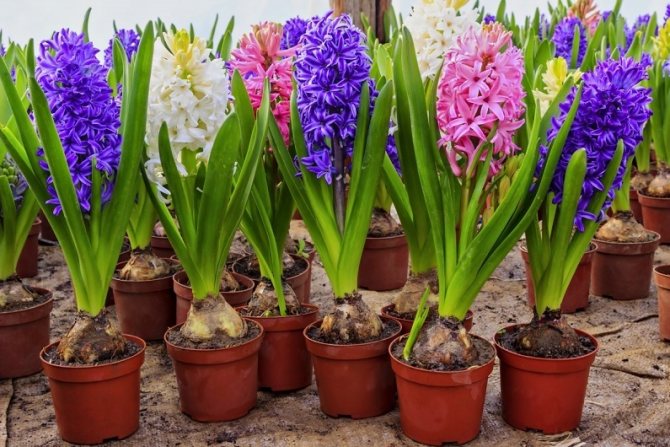

Hyacinth is a bulbous plant consisting of a dense bulb and a flowering stem. Bell-shaped flowers, simple or double, are collected in 20-35 pieces per inflorescence on a stem up to 30 cm high. The flowers have a delicate aroma, when they bloom, they acquire a curly appearance. The color of the flower is different: white, yellow, pink, crimson, red, lilac, blue.
Hyacinths bloom in early spring, as soon as the air temperature reaches +15. Flowering directly depends on the color of the hyacinth, the blue inflorescences bloom first, then pink, then white, followed by red and purple, and yellow and orange flowers bloom last. The color of the future inflorescence of the flower can be determined by the color of the scales of the bulb. Hyacinth blooms for 7-12 days, some modern varieties have a flowering duration of up to 20-25 days. The bulb has a maximum lifespan of 10 years.
How does it bloom?
Herbaceous perennial reaches a height of 20-40 centimeters. A peduncle sprouts next to the narrow linear leaves, and bloom on it flowers in the form of bells, collected in spike-shaped brushes, which are called sultans.
The flowering process is accompanied by:
- emitting a subtle aroma;
- the formation of short pedicels;
- the formation of a fleshy capsule-fruit of a spherical shape.
Inflorescences are different colors: blue and blue, lilac and lilac, white and yellow, red and pink, cream and even black.


Step-by-step activities after flowering hyacinth for open ground
After the end of flowering, the bulbs must be in a state of rest to restore strength, therefore, the necessary procedure is to dig up the bulbs. This allows the plant to fully bloom for the next year. To do this correctly, you need to follow a series of sequential steps.
Hyacinth care before digging out the bulbs
- The wilting hyacinth is left in the soil for some time, while the arrow is necessarily cut off, otherwise the seed pods will begin to ripen, which will take away the strength from the bulb;
- In young hyacinths, the arrows are cut off before flowering, so that a large, strong bulb is formed for planting next year;
- The leaves of the plant are a source of nutrients, so they are not cut off, but left to wilt completely;
- Watering begins to be reduced and gradually removed altogether;
- The last dressing is carried out before digging the bulb, it should consist of phosphorus and potassium fertilizers.
Digging out the bulbs
It is impossible to grow hyacinths without digging the bulb for several reasons:
- Without digging, hyacinth does not bloom the next year or blooms poorly;
- Varietal traits and decorativeness may be lost;
- By digging out the bulbs, you can find diseased specimens and discard them;
- Digging makes it possible to sort the bulbs, and choose the best specimens;
- When digging up, the children are separated for further breeding;
- Digging and subsequent storage stimulates flowering and planting of flower buds;
- The bulbs removed from the beds will not become "victims" of rodents, which can destroy the roots left in the ground.
The bulbs are dug out in late June - early July, while the dried leaves are visible, otherwise the bulb may not be found due to its deep burial.
It is necessary to dig it out very carefully, together with a lump of earth, placing the shovel clearly vertically and deepening it enough so as not to damage the roots.
The most favorable weather for this procedure is cloudy and dry.
Stages of bulb storage
The storage stage is very important, since it is during this period that the future flower is laid. Inside the bulb there is a regeneration bud, due to which the buds of the shoot with leaves and inflorescences, as well as the buds of daughter bulbs, are formed.


At the first stage, after digging, the bulbs are kept in the air, in the shade to dry at a temperature of +20 ° C, after washing and disinfecting in a solution of potassium permanganate or 3% solution of karbofos (no more than 30 minutes). Usually 5-7 days are enough for drying.
After drying, the bulbs are cleaned of husks and dried roots, separated from large children (it is better not to separate small children) and stored in wooden or cardboard boxes in 1-2 layers, sprinkling with sawdust. Some store bulbs in paper bags or natural fabric bags.
Mandatory storage conditions for bulbs at this stage:
- Storage temperature: first 10 days… + 30 ° C, then until mid-September… + 25-26 ° C;
- Humidity 45-60%, but not more than 70%, otherwise the bulbs will either dry out, or with high humidity they can be affected by fungal diseases;
- Ventilation of the room is necessary, since hyacinths, during storage, emit gas, and without ventilation, the bulb begins to "suffocate". In addition, without air movement, tubers can be susceptible to diseases in the form of bacterial rot;
- Artificial lighting is not allowed, otherwise the bulbs will rot, the room should be dark;
- Containers and tools must be disinfected.
This stage lasts 2 months. During storage, the condition of the bulbs must be regularly checked and defective material must be discarded.
At the second stage, the basic conditions remain the same, except for the temperature, it must be reduced to 17-18 ° C. The duration of the second stage is about a month.
The total rest period for hyacinth is 95 days.
In autumn, a few days before planting, the bulbs are hardened in a cold room at a temperature of ... + 4-5 ° C for better adaptation to the external environment.
Gloves should be worn when handling hyacinth bulbs as they contain oxalic acid and can irritate the skin of the hands.
Planting bulbs outdoors
Sowing of bulbs in open ground is carried out in late September - early October. The timing of planting must be clearly maintained, since with an early planting, the plant can grow and freeze, and with a late planting it will not have time to take root and die. It is advisable to cover the planting site with fallen leaves.
Important! Don't plant hyacinths in spring!
It is necessary to sequentially perform a number of actions:
- Prepare the soil: dig it to a depth of 30-40 cm;
- Apply fertilizers: 1 sq. meter 70 g of superphosphate, 30 g of potassium sulfate or 10 kg of humus;
- Select medium strong bulbs with a diameter of 5 cm;
- Disembarkation scheme: distance from each other 15 cm, depth 15-18 cm (children are planted separately and shallowly - 5 cm);
- Sand is added to the bottom of the hole; growers call it a "sand pillow";
- The bulb is planted in a hole and covered with soil without deepening the root collar.
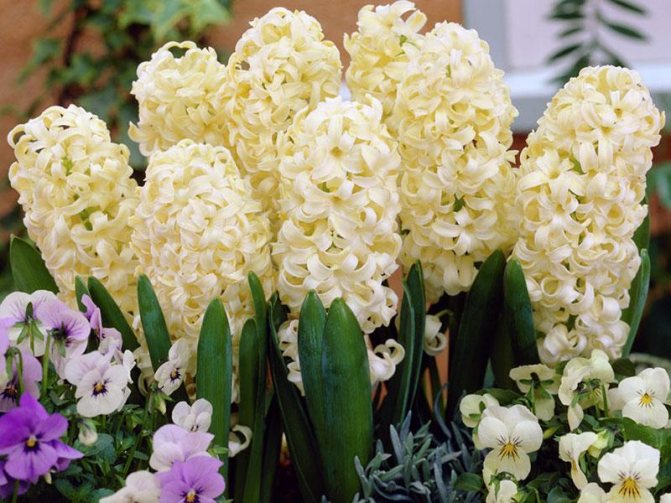

Leaving during forcing
Most often, hyacinths are sold in small pots, where they are very cramped. At the same time, the plants experience a lack of moisture and need feeding.
When forcing takes place, the bulb is depleted, so it is not dug out immediately after flowering, but is given time to recover.
Peduncles, which have already faded, need to be cut off, after which the plants are transplanted together with a lump of earth from a small pot to a more spacious one, at the bottom of which they make a sufficient drainage layer.
The soil substrate can be bought ready-made or made yourself from soil, peat and sand.
The bulbs must be covered with soil up to the neck (do not bury them deeper).
Hyacinth pots are placed in bright places (glazed balcony, windowsill) and provide plants with moderate watering. In this case, the soil should be moistened, trying not to fall on the bulb. Various dressings are also used.
In open ground, hyacinths are transplanted after the formation of leaves in them, in the spring, when the weather is warm.
Plants are planted in a hole with a lump of earth, without deepening the bulb too much.
When forcing occurs, the bulb does not need to be planted in a pot to re-bloom. The plant by this time will be too exhausted: it needs rest for 3 months.
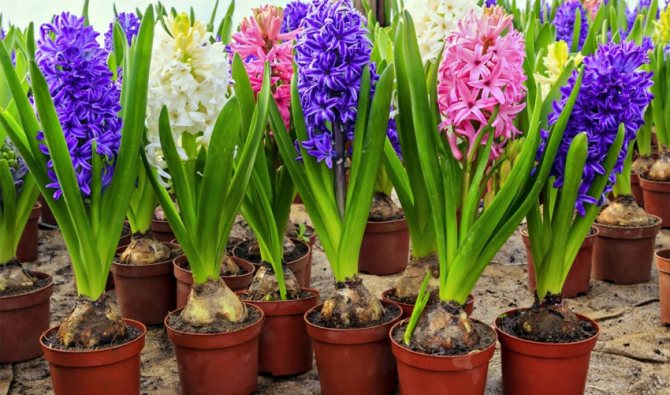

Saving indoor hyacinth bulbs at home
For home grown plants in pots, keeping the bulbs after flowering has a simpler algorithm.
After flowering, the inflorescence is cut off, and when the leaves wilt, the bulb is taken out of the pot and processed with foundation. The bulb is cleaned of soil, old roots, babies and dried at room temperature. Then it is wrapped in paper and placed in the refrigerator in the fruit and vegetable compartment at a temperature of no more than 5 ° C until autumn, you can use the subfloor. The bulbs must be monitored very closely to prevent drying or decay.
100% no result. According to the reviews of amateur flower growers, most of the bulbs are lost.
Some people use a different way. To create a dormant period after flowering, the bulb is not removed from the pot, but after removing the ground part, the pot is sent to the basement for 1.5-2 months, maintaining the temperature from +5 to +10 degrees, preventing the soil from drying out.
The rest period can neither be shortened nor increased. If the plant is brought out of hibernation earlier, it will be weak and unlikely to bloom. If you overexpose in the dark, then the flower will throw out the leaves, and the formation of inflorescences will be delayed.
After a dormant period, the bulb is planted in a pot for distillation, and by a certain date or holiday.
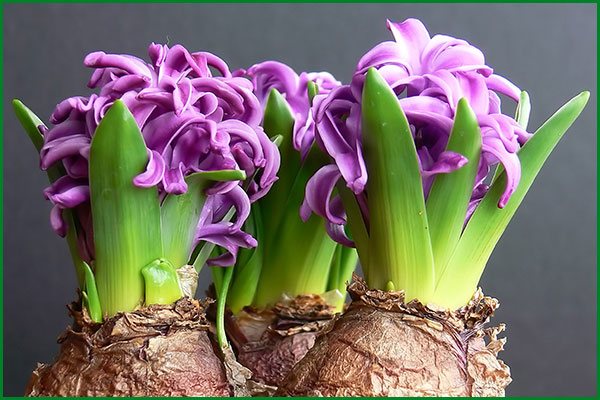

In all countries where this flower is cultivated, it symbolizes happiness and joy. Growing hyacinths at home - for peace and harmony in the family.
Three important stages
- The first 8-9 weeks the air temperature is maintained within +20 ° С. During this time, the scales will dry out. The duration can be shortened by raising the temperature to +30 degrees. In this case, it is recommended to transfer the bulbs with sphagnum. This retains the necessary moisture and prevents the bulbs from drying out.
- In the next four weeks, the temperature is gradually lowered to +18 degrees, while the humidity level is maintained. For this, the planting material and sphagnum are periodically moistened with warm water.
- In the last week, the temperature needs to be lowered to +10 degrees. It is imperative to avoid sudden changes in air temperature to avoid stressing the bulbs.If you live in a region with a mild climate, then this stage can be skipped, because the temperature regime of the last week increases frost resistance.
Plant bulbs contain oxalic acid. It can irritate the skin. Therefore, in order to avoid undesirable consequences, you must adhere to the rules of personal safety.
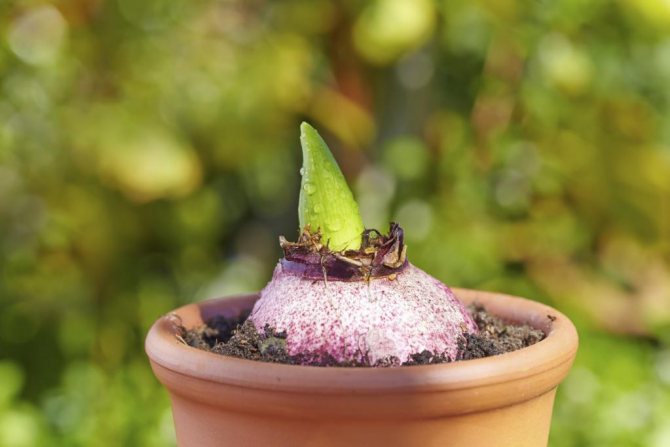

Hyacinth distillation care
Hyacinths, which are often sold in small pots, delight us in winter and early spring. They bloom quickly, filling the room with a fabulous scent. Unfortunately, the life of such a hyacinth is fleeting and full of hardships. He suffers from lack of nourishment and thirst, there is little room in the pot for a normal amount of soil. When watering, it is difficult not to soak the bulb, so the substrate in the pot has to be moistened through a tray or gently watered to the very edges and corners of the pot. Hyacinth in a warm room falls to one side and breaks easily. This is because its elongated peduncle with a heavy ear leans towards the light (window), and it is impossible to strengthen the support in a tiny pot.
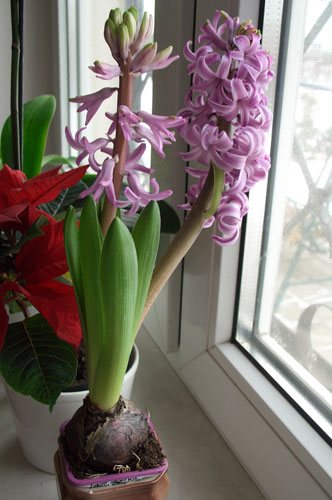

Various techniques help to keep the peduncle in an upright position. From time to time, the pot has to be turned, transferred to a cooler place overnight, or strengthened with improvised means. The peduncle of the hyacinth turns out to be more even, the pot with which stands in a bright and cool place (on a glazed insulated loggia, veranda, in a winter garden, etc.). In addition, winter distillation depletes the bulb.


I buy blooming hyacinth in a pot not only as a temporary decoration. I will use this opportunity to replenish my collection of hyacinths. If the newly purchased hyacinth is very cramped, it stays on the roots alone, and there is little left of the substrate, you have to immediately engage in transshipment into a new flower pot. Before that, I well moisten the contents of the old forcing pot and carefully transfer the bulb with roots into a larger container. The main thing is not to deepen the neck of the bulb. It is not necessary to completely cover the bulb with earth. You can add additional soil to it later, after flowering. A flowering plant transplanted into a larger pot is easier to care for. It looks much more interesting, and it can be grown in such a pot after the hyacinth has faded and the peduncle is cut off.
Favorable time to dig up the bulbs for storage
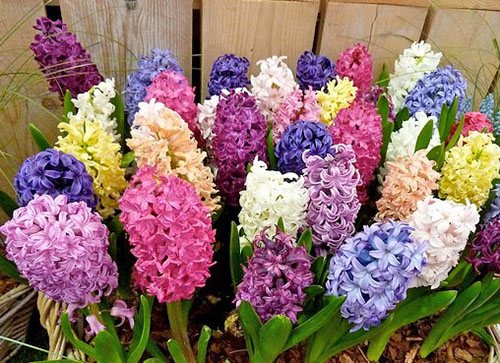

The most ideal time for the digging of hyacinths after flowering to be done correctly is the end of June - the beginning of July. After the leaves turn yellow and begin to dry, you can start digging. The bulbs removed from the ground are carefully peeled, the remaining leaves are cut and placed in plastic ventilated boxes for preliminary drying for 3-5 days in a dry room. Then the dried bulbs are cleaned of excess husk, dry roots, large children are separated and placed in prepared boxes for storage.
Planting hyacinths in autumn
Wild hyacinths are found in the Mediterranean countries, as well as in Asia Minor and Central Asia. There they bloom in early spring, rest in the warm earth, having managed to form a full-fledged flower bud the next year, and in good health they leave to “winter”.
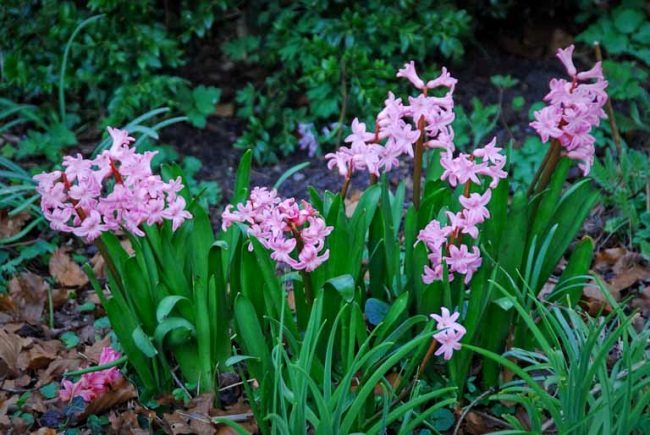

Hyacinth in the wild
In our country, hyacinths do not live so freely: they bloom not earlier than the end of April, fade in approximately closer to June. The remaining time, as well as the heat, is not enough for the heat-loving culture to form the rudiments of a good inflorescence for the next year. This explains the manipulations with the digging and burying of the bulbs: after flowering, the hyacinth remains in the ground, accumulating food, and is "engaged" in the formation of an embryonic bud outside the ground, after digging.
When to plant hyacinth in fall?
Planting hyacinth bulbs held last among all bulbous flowers. This must be done before the ground freezes.Taking into account global warming for the middle band, this will be the second half of October - early October. But you need to look at the situation: early is bad, and late is bad. If planted too early, they will begin to germinate even before the onset of frost; if it's too late, they will not have time to take root before frost.
Of course, it is quite difficult to guess the exact timing in practice: it’s warm almost until the New Year, and then suddenly the first snow will fall in early October. More often, nevertheless, early frosts and prolonged rains create problems. To keep the site dry and warm, cover the ground with plastic wrap or other accessible moisture-proof material after alarming weather forecasts. And generously mulch the sprout of hyacinth that has hatched before winter.
Where to plant hyacinths?
The soil for hyacinths should be either neutral or slightly alkaline. This flower does not like acidic and even slightly acidic soils, therefore, if necessary, the earth is deoxidized with ash, chalk, dolomite flour, etc. (read more about deoxidation here).
You can not plant hyacinth in the shade or partial shade - its flowering will not be as complete as in a lighted place.
Also, when choosing a place for hyacinths, you should take into account the possibility of soaking the bulbs - give up areas where melt water accumulates.
The plot is prepared in advance - around September, so that the soil settles down. If possible, enrich the soil with decomposed manure, peat, or compost.
How to plant hyacinths?
Each hyacinth bulb can live and bloom fully for 10, or even more, years. But for this, the flower must be provided with normal conditions, including the feeding area. For one adult bulb, a 15x20 cm “area” is sufficient. The depth of planting of the hyacinth is of great importance: the neck of the bulb must not be buried, it must remain at the level of the soil.
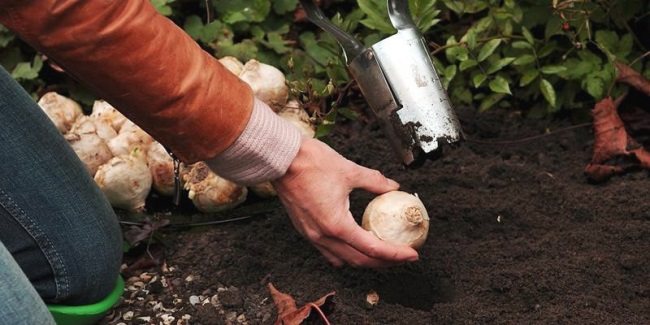

After digging holes, apply fertilizer under each plant (or loosely in the garden). For hyacinths, superphosphate and ash are best; you can use special granules for flowers in open ground. Fertilizers can also be applied during soil preparation, including deoxidation. If the autumn is dry, the hole is watered. This will help the bulbs to take root before frost, and the moist soil does not freeze as much as the dry one.
Very often after planting hyacinth bulbs rot. To prevent this from happening, sand is poured onto the bottom of the hole, under the bottom of the bulb, with a layer of two fingers (after watering the hole).
Do I need to mulch plantings of hyacinths? It depends on the climatic conditions of a particular region and the coming winter. Growing hyacinths in the middle lane requires shelter for the winter. It can be spruce branches, compost, sawdust, straw and other materials at hand.
Where to plant hyacinths
For good growth of any flower, you need to know where it is best to plant it, taking into account lighting and soil. Hyacinth is no exception. Therefore, you need to know what place in the garden you need to choose for planting it.
Hyacinths should be planted in dry areas with loose, light soil, well lit by the morning and evening sun. You can add some coarse dry sand to the soil.
Hyacinths love humus, but there is no need to put manure into the ground, hyacinths do not tolerate this fertilizer. You can also add peat to the soil. Clay soils, which do not allow water to pass through well, should be avoided.
It is advisable that the place for hyacinths is not blown by a strong wind, because these flowers do not like drafts. Cold winds, especially at the beginning of flowering, can be detrimental to these flowers.
You can try to plant hyacinths in partial shade, for example, under the crown of a tree or next to shrubs, however, hyacinths should not be planted in the shade of a house or a fence, because these flowers do not like thick shade.
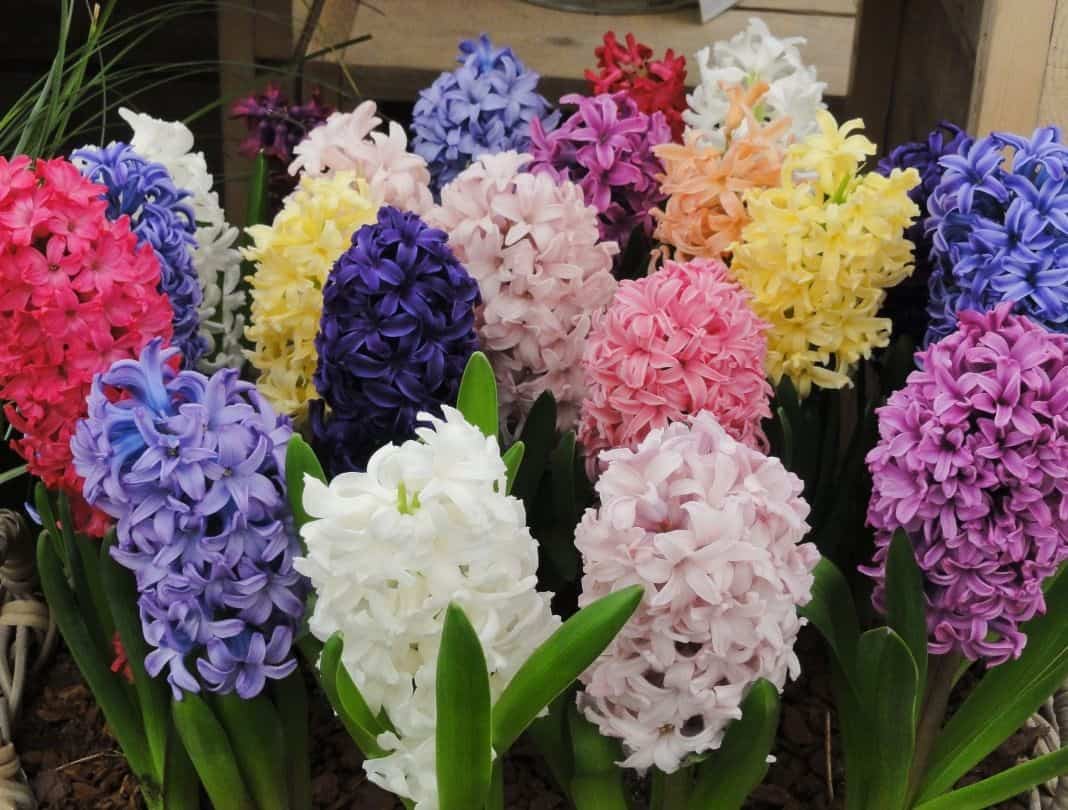

Just do not plant hyacinths too close to trees, because their large roots will take from the soil a lot of substances that hyacinths need so much for decorative flowering.
It is desirable that the site is not completely flat, but with a slight slope, and rainwater can drain without damaging the bulbs. Otherwise, the flowers may die.
If you choose the right place for the hyacinths, taking into account their preferences, then you can not dig up the bulbs for 3-4 years. Hyacinths will grow beautifully and decoratively bloom profusely.
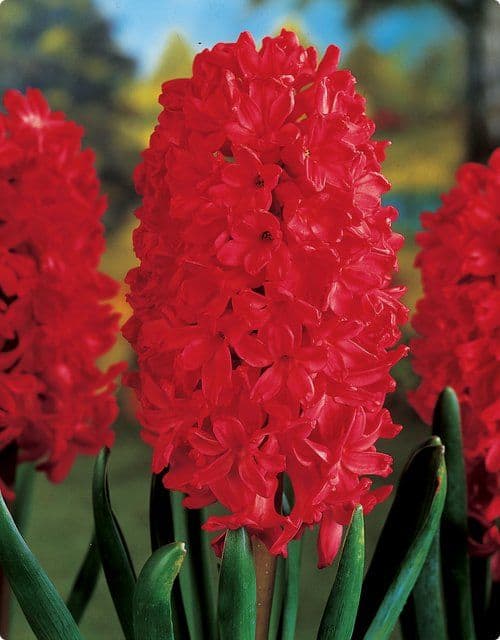

Hyacinth care in spring
The first thing to do in spring is to remove the mulch as soon as the snow melts. Hyacinths "hatch" from the ground very early. The covering material that has accumulated over the winter not only prevents the earth from warming up, but also creates a mechanical barrier to the growth of above-ground organs.


Hyacinths in spring
As soon as the first sprouts of hyacinths appeared, nitrogen feed for hyacinths (for example, 20-30 grams of ammonium nitrate per "square" of a flower garden). When the buds appear on the hyacinth, potassium and phosphorus (ammonium nitrate, superphosphate, potassium chloride - respectively, 20, 40 and 30 g per "square" of the garden) are added to the nitrogen fertilization. Hyacinth responds well to feeding with organic fertilizers - herbal infusions, bird droppings.
Hyacinth starts growing in the spring - leaves and inflorescences appear. The bulb "gives up" all the nutrients accumulated in the storing scales. Over time, these fleshy scales die off and become opaque - dry. The quality of the storage scales is very important for the hyacinth bulb, and it directly depends on the composition of the soil and feeding.
Hyacinth blooms from the end of April, but most varieties in May. The variety of color palette of hyacinths is amazing: white and cream, lilac and purple, blue and blue, crimson and pink. And what a delicate aroma the hyacinths exude!
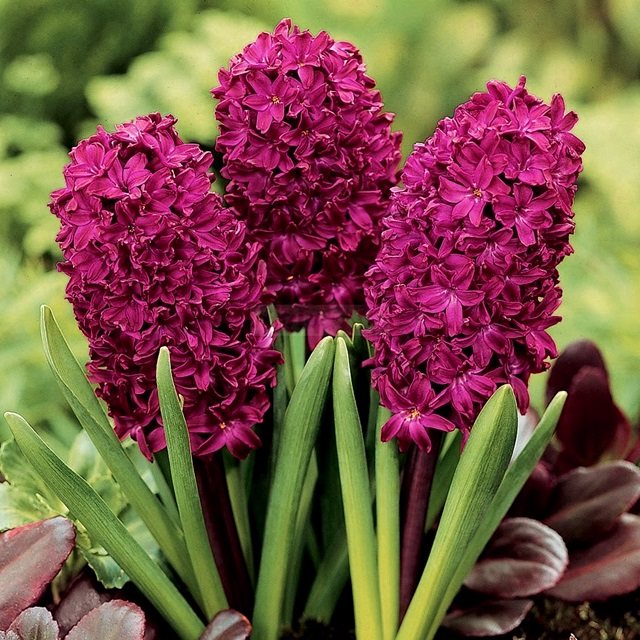

Hyacinth care after flowering
What to do after the hyacinth has faded? First of all, remove the peduncle and feed the plant, relying on phosphorus-potassium fertilizers (for example, superphosphate and potassium chloride - 40 grams per "square" of the flower garden). But you can not remove the leaves, as well as dig up the bulb immediately after flowering. Right now, the bulb accumulates nutrients from the ground to form a flower bud for the next year, and the leaves help it in this.
When the hyacinth leaves turn yellow and begin to dry out (usually in the second half of June or early July), it's time to dig up the hyacinth bulbs. Someone immediately cuts off the leaves and dries; some gardeners recommend to "dry up" the leaves along with the bulb in order to squeeze all the juices out of them in favor of the latter. For several days (5-7) the bulbs are dried at a temperature of about 20 degrees and with good ventilation, excess scales are removed, and large children are separated. If the children are very tiny, they can be left with their mother, carefully planted in the fall with the whole family, and separated the next summer.
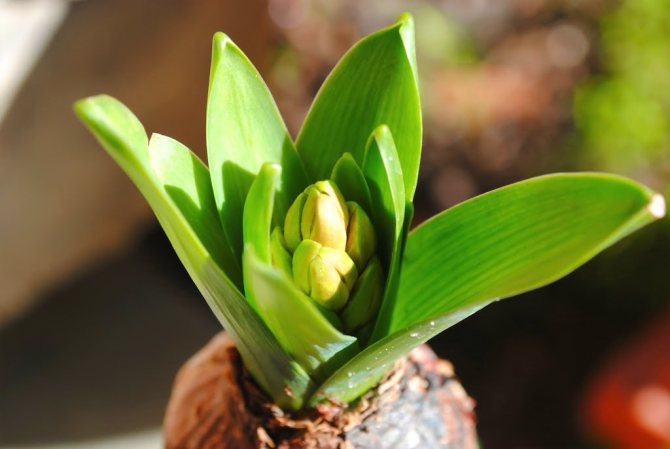

What happens if you don't dig up hyacinths in the summer? Firstly, this is guaranteed to weaken the plant - the bulb will not have time to rest. Secondly, the "schedule" of the hyacinth will go wrong, which is already difficult to establish in our climatic conditions. It often happens that such hyacinths bloom again at the end of summer, but ugly: a dense small inflorescence on a short stem. And next year such a hyacinth is unlikely to bloom: the flower bud has already been "spent", and there will not be enough time to form a new one.
The rest period is very important
The flowering time depends on the variety as well as the weather conditions. If it is warm and humid, the bulbs will continue to grow even during flowering. This means that it will last much longer. But as soon as the growth and development of the buds ends, a new stage begins. This is the growth of the bulb and the storage of nutrients. The better this stage goes, the more beautiful the flowering will be for the next year. And for its successful completion, you need to familiarize yourself with the recommendations regarding the care of this important part of the flower. It is necessary and correct to store hyacinth bulbs after digging up, and to ensure their further successful growth and development.
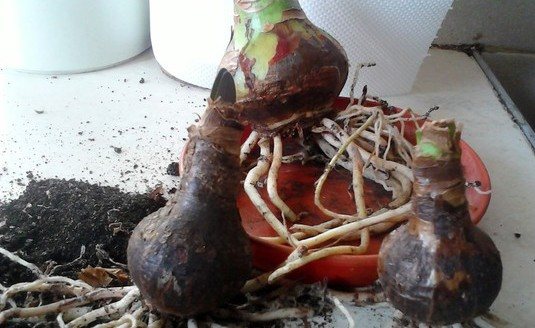

Hyacinth is a capricious handsome man
Not quite so, if you grow it for the sake of a beautiful flower bed, then it will not give you much trouble. Any beginner can handle this. But if you decide to get marketable bulbs, then you have to try.Do not forget to find out in advance when to dig up hyacinths after flowering, otherwise all the work can go down the drain. In the first case, you simply buy annual, spring-flowering bulbs, and in the fall you dig up and throw them away. Therefore, storage will not bother you. But today we are talking about the second option.
Note to the florist
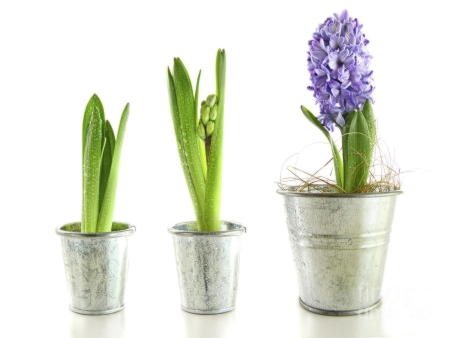

1. Why do hyacinth leaves turn yellow?
It is possible that the plant is preparing for a dormant period. If the tips of the leaves begin to turn yellow, this indicates several reasons: too dry indoor air; insufficient watering.
2. How to keep hyacinths after flowering?
It is necessary to cut off the peduncle, transplant the plant into a larger flowerpot using the transfer method (if the plant has grown from its pot) and put it in a bright, cool place. At the same time, caring for a hyacinth will be no different from caring for an ordinary houseplant. Thus, the hyacinth will accumulate enough strength for flowering and the formation of new bulbs next year.
3. Harm and benefits of hyacinth.
The beneficial properties of hyacinth have been known for many centuries. Hyacinth used:
- To protect against unrequited love and the evil eye;
- For aromatizing things;
- To combat depression and insomnia;
- To normalize the menstrual cycle;
- For the control of mosquitoes and cockroaches;
- As a disinfectant, antiseptic.
Today hyacinth is a popular component in cosmetology, it is used in the manufacture of creams and perfumes. In some cases, if a person has a weakened immune system or is allergic to strong odors, hyacinth can provoke nausea, vomiting, headache and irritation of the mucous membranes.
4. Why doesn't hyacinth bloom?
Inflorescences do not appear for several reasons:
- The dormant period for the plant was not observed (at least two months);
- Insufficient watering.
Overwintering water hyacinth
When the temperature drops below 10 degrees, the plant must be brought indoors. More precisely, the future planting material is entered. The main concern is keeping the hyacinth alive for reproduction next summer.
Only young shoots should be taken for storage, the diameter of which is about 10 cm and the roots reach no more than 10 cm in length.
Known storage methods for water hyacinth are overwintering in:
- aquarium;
- sand;
- three-liter jar.
Overwintering in the aquarium
This is not as laborious a process as it might seem at first glance. Choosing this method, you need to take into account some of the nuances. These include:
- Collect water from the same reservoir where the eichornia grew. This is the best option. If this is not possible, take the defended one. Harvest water from the reservoir for the whole winter in advance.
- At the bottom of the aquarium, place silt from the pond native to the hyacinth.
- The water should contain nutrients for the flower. You can add special fertilizers for aquarium plants.
- Normal room temperature is suitable for storage.
- It is advisable to place the aquarium on a windowsill to provide the necessary lighting. In the evening, the plant can be additionally illuminated with a fluorescent lamp.
- To prevent leaf decay, "plant" the hyacinth on a foam float so that the leaves do not touch the water.
Silt storage
- Take a deep pot and fill it with silt from the bottom of the pond.
- Pour some water in there. Keep in mind that the water level in the pot must be at least 3-5 cm.
- Place the pot on a regular windowsill.
In this case, additional lighting is not necessary. You only need to monitor the water level.
Sand storage
Take any transparent pot and fill it with sand. In winter, it is necessary to constantly maintain humidity, otherwise the hyacinth will die. No special maintenance conditions are required: room temperature, no additional lighting is needed.
Overwintering at the bank
Hyacinth can easily overwinter in an ordinary three-liter jar. For successful storage, follow these guidelines:
- Fill a clean jar with water from your own reservoir a third.
- Place the scions there and close tightly with a plastic lid.
- The bank should be placed on the north window. Room temperature is good. No additional illumination is needed.
By spring, the water will turn dark brown. You do not need to be afraid of this, this is a completely normal phenomenon. The bulk of the roots will fall off, most of the leaves will die, but the plant itself will survive. After planting in a pond, leaves and roots will quickly grow back.
Water hyacinth is a flower of stunning beauty. It is unpretentious in maintenance, but quite demanding in terms of temperature and lighting. Particular attention should be paid to caring for the plant in the winter. There are many ways to preserve a flower for further reproduction.
In order for outdoor care not to be burdensome, you should carefully consider the choice of a suitable place. A well-lit area is required, at least slightly sheltered from the wind. Do not plant a plant near trees, bushes. This can adversely affect the availability of nutrients for the plant's roots. In addition. you will have to cultivate the soil deep enough, and you, by chance, can damage the roots of neighboring plants.
The site can be flat, a slight slope is allowed, which will help to quickly remove excess moisture. Plants planted in the lowlands may die, due to a sufficiently high level of groundwater and excessive soil moisture. The groundwater should be at a depth exceeding 70 cm. If the level is critical, you should take care of a good drainage layer when planting the plant, you can also try to raise the flower garden a little by adding a little soil. It will be easy enough to care in the garden when planted in light sandy soil, well enriched with humus. PH values are required above 6.5.
The soil should breathe well, and the recommended layer of fertile soil should be at least half a meter. A good mixture can be prepared from four components. You will need 40% of sod land, 40% of well-rotted manure, 10% of river sand and 10% of ordinary leaf humus.
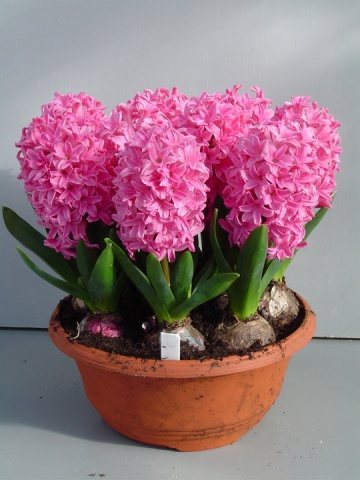

Digging technology
First of all, you should understand that the process of digging out the plant bulbs is carried out very carefully. You need to choose them from the flower bed with a large clod of earth. Damage to even the smallest specimens will lead to rejection.
Did you know? In Holland, the first hyacinth flowers appeared as a result of a storm. From the destroyed ship they were washed ashore, and the caring hands of farmers helped them to take root.
Accordingly, there are several useful guidelines and rules for this procedure:
- For the moment of removing hyacinths from the ground, you should choose a day with good sunny weather.
- A pitchfork or a shovel is used as garden tools. They pry the soil as deeply as possible - this should be a level that is much higher than the occurrence of tubers.
- Absolutely all bulbs are selected from the soil - large and small. After that, the soil is checked for residual planting material in the form of the smallest children.
- It is forbidden to clean with your hands too damp soil, which is tightly attached to the bulb. It is better to wait until it dries up and remove it carefully. Rinsing in water is considered an alternative. But after that, the tuber should dry out.


It is recommended after digging to immediately immerse the bulbs in the Karbofos solution (for a period of about 30 minutes). After that, they should dry for 5 to 7 days.
Reade set Go
Now we are very close to the question of when to dig up hyacinth bulbs after flowering. The ideal time for this is the end of June or the beginning of July. Since the hyacinth blooms early, by this time the bulb is completely ready to be sent to rest. After the leaves have turned yellow and withered, you can start working.To do this, using a fork, you need to carefully remove the bulbs from the ground and carefully peel them. Remove any remaining foliage and place the bulbs in open boxes to dry out a little. It is very important to place them in a dry and well-ventilated area. This is where questions begin, like: "I dug out hyacinths after flowering, how to store them so that they can calmly wait for the next planting?"
When to dig up the plants?
In order for the hyacinth bulbs to remain healthy by spring and sprout next year, they must be removed from the ground in a timely manner for the winter. Digging up too early will prevent the bulb from filling with nutrients from the soil. You should also not delay with this process.
Since hyacinth is an early flower, you can dig up the bulbs in mid-June. But again, it is not worth focusing only on the timing. There are other signs that the time has come to retrieve the plant.
Dig up the hyacinth after the inflorescences have faded and the upper third of the foliage has turned yellow. It is undesirable to wait until the bush is completely dry. Digging can cause the stem to break and make the bulb harder to reach. Also, if the husk is badly cracked, then at the time of digging the children may accidentally come off and remain in the soil.
Spring - how to achieve flowering hyacinth
In the spring, the cover must be removed and the hyacinth sprouts must be freed from soil and mulch residues. After drying, the top layer of the soil must be loosened carefully.
For the formation of a correct and full-fledged flower arrow, many growers cover the area with hyacinths with dark plastic wrap for some time. The arrow receives the signal "little light" and begins to stretch upward intensively. This is how you can achieve a high peduncle, which will allow hyacinths to have a presentable appearance. If the peduncle does not stretch to the desired height, then the flowers, of course, will bloom on the short arrow, but the hyacinth will look short and there will be few flowers on the arrow.
On average, the peduncle of varietal hyacinth should reach 25-30 cm in height, and it should have 20-30 fragrant bell-shaped, tubular or funnel-shaped flowers on it.
During the forcing of the peduncle, it is very important to help the plant with feeding. To fertilize hyacinths, ammonium nitrate or a multicomponent mixture for flowering plants is used.
Second cycle, planting in soil
We already understood whether hyacinths are dug up after flowering. But what happens to them then? After a long rest period, the bulbs are planted back into the soil. It has already been said that the optimal period for this is the beginning of October. It is already cold enough that the plants do not start growing, but at the same time the soil is not frozen, and they will have time to take root. At the same time, it is very important to guess the timing. Bulbs driven out at home are also planted in the ground in the fall. It is very important to do this before the first frost. At the same time, the plants insulate very well, covering them with a layer of foliage and protecting them with a film from rain and dampness.
Hyacinth flowers - description
Hyacinths are one of the earliest spring flowers. The homeland of hyacinths is the Middle East, North Africa and the Mediterranean, but Holland has done so much to popularize them that it can rightfully be called the world's "hyacinth center". The largest number of varieties and varieties of hyacinths was created in the Netherlands, and every year millions of hyacinth bulbs are sent from the Dutch city of Haarlem around the world. Dense bulbs of hyacinths consist of succulent lower leaves, and the flowering stem (30 cm in height), which is a continuation of the bottom, after flowering dries up along with narrow, upward-pointing leaves sitting at the stem at the very bottom, but in the corner of the upper leaf, on the stem inside bulbs, a bud is formed, gradually turning into a bulb that will bloom next year.In the corners of other leaves, weak bulbs are often formed, the so-called babies, which can be separated and used for vegetative propagation. Hyacinth flowers are collected in apical carpal inflorescences, having the shape of a cylinder or cone. The perianth of the flower is a brightly colored bell-shaped funnel with bent lobes. Shades of hyacinth color represent a wide palette: white, red, pink, lilac, blue, pale yellow ... Hyacinths are simple and double in the form of flowers. The fruit of the hyacinth is three-nested, each nest contains two seeds with a delicate peel.
Landing
A little later we will talk about when to dig up hyacinths after flowering, but for now, let's decide on the timing of planting. This flower is planted before winter, usually from mid-September to mid-October. In the northern region, the planting date is shifted forward to August. In more southern ones, on the contrary, it can move away. In this case, there is a basic rule that applies to all bulbous. They should have time to take root before the onset of frost. This usually does not take more than 2 weeks.
Top dressing
After the snow has melted and the winter protective layer has been eliminated, the plant must be fed. It is necessary to apply nitrogen fertilizers to stimulate the peduncles. The next feeding will be required already during the budding period. During the second feeding, phosphorus will be required.
Adequate hyacinth care after flowering involves feeding after flowering. It is extremely important to do this so that the bulb can replenish nutrients, they will be used as early as next year, when flower stalks are formed.
Watering is required with each feeding. This will help transfer nutrients to the lower layers of the soil and at the same time wash the upper layer well. The liquid should not get on the leaves, flowers. Remember to loosen the soil, but do it very carefully so as not to damage the very fragile plant.


Autumn - preparing hyacinths for winter
Hyacinths are planted in August-September. But if autumn is warm and lingering in your area, it is better to plant the bulbs in late September - early October. They should take root well, but not have time to germinate. Hyacinths planted in autumn are watered, as a rule, twice: during planting and one more time after planting, although if autumn is rainy, then once is enough.
After planting, hyacinths need care. It is very important to provide them with the correct temperature regime. To lay the bud, the hyacinth needs a rest period, which is why it is planted in the ground on the eve of winter. A cool soil temperature is exactly what the hyacinth needs, but at the same time, the bulbs should not freeze, and therefore they need to be covered for the winter.
In autumn, the planting site of hyacinths is covered (mulched) with compost, a layer of fallen leaves, straw or sawdust. This not only protects the bulbs from winter frost, but also prevents weeds from germinating in the spring.
When to plant bulbs
Depending on climatic and weather conditions, hyacinths in different regions of the country can be planted from the end of September. This process can last until early October. If you start planting earlier, then young shoots may appear on the planted bulbs. This will lead to the inevitable death of the plant in the winter.
Did you know? For the first time, hyacinth flowers are mentioned in ancient treatises of Byzantium and Persia, which are several thousand years old.
If the hyacinth is planted later, the sensitive tuber may suffer from premature frost. Before planting a plant, you need to take care of the preparation of a special substrate.
Video: planting hyacinths in a new way
Autumn planting
The flowerbed is prepared in advance, a month or two in advance. The soil is well dug to a depth of 20-30 cm, since the roots of these plants go deep.Adding compost or rotted manure to the soil for digging has a beneficial effect on flowering (but not later than a month before planting). You can also fill the soil with autumn complex fertilizer.
In central Russia, hyacinths are advised to be planted in the first decade of October. With early planting, especially if the fall is warm, hyacinths can start growing and die from frost. And 2-3 weeks before frost, the bulbs just have time to take root, but not germinate. For this, the end of September - beginning of October is considered the optimal planting period.
In autumn, as a rule, in September, the bulbs are planted in the ground to a depth of 1.5 - 2 cm. In general, it is believed that the planting depth of the bulbs depends on the diameter. Large specimens are buried by 18-20 cm, if measured from the bottom. On clay soils, the planting should be shallower. At the bottom of the hole, you can pour a 2-centimeter layer of sand, the hyacinths like this.
The bulbs are lowered into the hole with their bottom down, sprinkled with soil about half of the bulb, and then with soil.
Recommendations
As we have seen, perennial hyacinth tubers need careful maintenance. Consider a few more nuances associated with digging and storing these plants.
- A sharp drop in temperature. When storing the bulbs, the correct temperature is required for the stem to form properly. However, you shouldn't go too abruptly to 10 ° C to keep the plants healthy. If the temperature change is made gradually, then the hyacinth will become more resistant to frost, which will allow the tubers to remain in the soil for one season.
- Mold. If the storage rules are violated (high humidity), mold may appear on the bulbs. This is why it is imperative to regularly look through the boxes of stored bulbs and discard spoiled seeds to prevent mold from spreading to others. After you need to process the rest of the fruits with potassium permanganate.
- Children. After you dig up the bulbs, you need to peel them. But this should be done very carefully so as not to damage the hyacinth fruit itself, as well as its children (small bulbs are formed after flowering). Small onions need to be separated, washed and treated with manganese. After they need to be planted in pots at home and looked after, ensuring regular watering and feeding. After 3-4 years, the tubers will gain a normal volume, and they can be planted in open ground along with other hyacinths.
- Treatment. As mentioned earlier, hyacinth bulbs need to be processed if they are with infected specimens. Although it is possible to carry out disinfection and prophylaxis. After the bulbs have been washed and cleaned, they should be soaked in hot water (no higher than 50 ° C) for 10 minutes. Then treat with a solution of karbofos (leave for 30 minutes) or manganese (5 grams of potassium permanganate per 10 liters of water).
- Speed up the process. If you want to speed up the drying process of the bulbs, then simply increase the temperature in the first and second periods by 5 - 7 ° C.
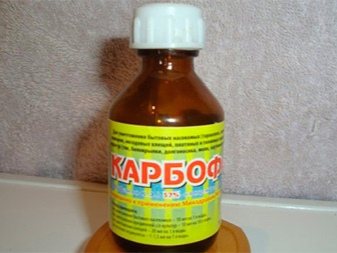

In fact, hyacinth is not as difficult to care for as it might seem at first glance. But following simple rules, you will get a very beautiful and healthy flowering plant.
See below for tips on digging and storing hyacinth bulbs.
Do I need to dig it up?
Most often, hyacinth owners wonder if they need to dig up the plants annually. Experienced gardeners recommend removing hyacinth bulbs from the ground every year. If you do not do this, then the following problems may arise.
- Overheat. If hyacinth bulbs are left in the open field after flowering, the summer temperature can harm the plant by dividing it into several parts. This can significantly weaken the flower, and therefore will stop flowering in subsequent years.
- Root development. If you do not dig up the plant, then this will contribute to the deepening of the roots into the soil.Too large roots will weaken the hyacinth, and it will also be difficult to remove it from the ground without damaging the plant.
- Disease propensity. The longer the hyacinth stays in the ground, the more it will be susceptible to viral and fungal diseases. In addition, a weakened bulb is more likely to get sick if not stored properly.
- Pests. In summer, any garden is full of different pests, so the bulbs left in the ground are prone to destruction by rodents, worms and insects.
- It is difficult to identify a bad plant. If the hyacinth is constantly in the ground, then it is very difficult to know if the bulbs are healthy and if they have disappeared. In addition, a plant that is sick or dead due to illness can infect healthy bulbs.
- Poor frost resistance. If you do not dig up hyacinths for the winter, then they greatly weaken and do not tolerate frost well, as a result of which they may stop blooming or completely disappear.
- Excess moisture. It is extremely difficult to control the soil conditions in which the bulbs are left. This means that plants can suffer from excess moisture.
Will hyacinth bloom?
Those who prefer to throw away the forced bulbs are partly right. Hyacinths of Dutch breeding are often sold to us in pots, they are characterized by weak winter hardiness. And if there is no flowering next year, the bulb is probably dead.
But don't be in a hurry to get upset. Numerous experience of amateur flower growers (like you and me), were able to achieve flowering bulbs, subjected to forcing! It's just that very often (and most likely) it is not yet time. Forcing is a lot of stress for the plant. Usually the next year the plant rests, gains strength, and blooms only two years after forcing (that is, through the spring).
Flowering problems and solutions
Hyacinth may not always bloom on time. This is due to the influence of diseases and pests or improper care of the plant.
REFERENCE!
The flower does not tolerate excess moisture, liquid on inflorescences or leaves. It is recommended to water through the pallet so as not to harm.
Hyacinth does not bloom with the following problems:
- content during dormancy at high temperatures;
- lack of moisture or its excess;
- scarcity of lighting.
If the reason is unknown, you can try again to dry the bulbs, clean them from rot and excess scales and put them back in a dark place, observing the required temperature regime - up to +5 degrees. When the hyacinth does not bloom due to moisture problems - its lack or overabundance, watering should be normalized and the root system should not dry out or rot. If there is little light, you can move the pot to another place - where there is more sunlight.
If you find an error, please select a piece of text and press Ctrl + Enter.
The need for annual digging of hyacinths
Perennial hyacinth bulb. It is able to function for 10 years. After this period, flowering stops, and usually new planting material is used.
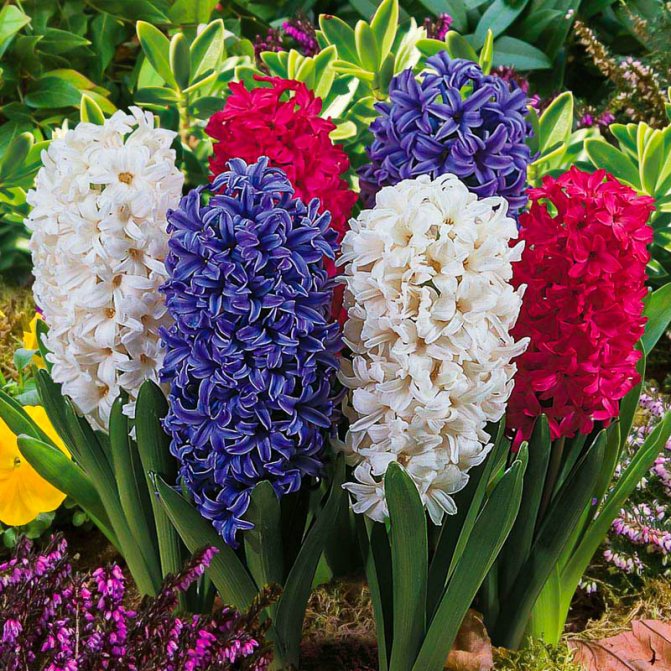

Hyacinths
Whether it is necessary to dig hyacinths for the winter is determined by environmental conditions. In the southern regions, characterized by a warm climate, the flower can be left untouched, leaving it to winter in the ground. But this can lead to a deepening of the bulb. At the same time, attempts to get to it can lead to damage. Also, ignoring digging will affect flowering. It will not necessarily disappear, but it will not be as lush and colorful.
The conditions of the middle lane require the hyacinth to be dug every year. This is necessary in order to:
- eliminate the possibility of decay;
- protect from rodents and other pests;
- ensure abundant flowering in the future.
Processing after digging
When to dig up tulip bulbs after flowering
After removing the bulbs, it is recommended to rinse them under running water. It should be cool, no higher than 18 degrees. Then the plant needs to be pickled.To do this, keep in warm water for 10-15 minutes. Its temperature should be about 50 degrees. There are also special solutions as an alternative method. For example, Karbofos, the active ingredient of which kills harmful insects, has disinfectant properties. Half an hour in solution (3%) will help disinfect the flower. You can also use a weak solution of potassium permanganate, which has a disinfecting effect.
Why does hyacinth not bloom
It happens that hyacinth does not bloom in any way. This happens for several reasons:
- If during the dormant period the bulb was in a room where it is too warm.
- If the soil is acidic, poor. The plant feels good only in light soil saturated with humus, sand, compost. The acidity should be neutral.
- Flowers are in waterlogged soil. Hyacinths love drained soil. Do not plant them in a place where groundwater accumulates.
- Insufficient water also negatively affects the development of flowers.
- Plants love sunlight and do not tolerate drafts. Therefore, the place chosen for them is quiet, but sunny.
Potted hyacinths: when to remove the bulbs
If hyacinths grow in containers or in pots, then they have the process of forcing and the beginning of flowering occurs much earlier, and sometimes later than the traditional dates for this plant. Sometimes the faded plant is kept with leaves until mid-summer and is dug up only at the end of July. In this case, watering the plant is reduced, the container or pots are placed in a cool place, protected from direct sunlight.
You can finally interrupt watering after the onset of yellowing and the complete withering away of all the foliage. After the final drying of the green mass, the bulb is removed from the pot, dried properly and carefully checked and cleaned.
After the end of the dormant period, the hyacinth bulbs are again planted in the ground in the garden plot. Basically, this is done either in early November, or at the very end of October, that is, in the second half of autumn. The bulbs must have time to take root before the frost sets in, but at the same time they must not start growing, otherwise the frost will simply destroy all the plants.
Why dig up tulips and hyacinths every year
Almost all floriculture literature recommends digging tulip and hyacinth bulbs annually. Why do this if they bloom beautifully without such a troublesome procedure?
Tulips and hyacinths are recommended to be dug up annually for various reasons. If this is not done, then good flowering of these plants is unlikely to be achieved.
The biological feature of tulips is the annual renewal of bulbs. In the bulb of a flowering plant, the following happens: a bud is laid near the flowering stem, from which a replacement bulb will grow (it will be the largest that can bloom in the next season). In addition to it, buds are laid at the base of each scale, from which daughter bulbs will form. Their number and size depend on the size of the mother bulb and the plant variety. It turns out that after flowering, only a dry brown shell remains from the planted bulb.
If the tulips are not dug up, then next season the story will repeat itself. The replacement bulb will bloom and produce offspring. Daughter bulbs that have reached the required size can also bloom, and small ones will grow up. Over time, space and food for the expanded "family" will not be enough, the so-called degeneration will begin. The bulbs will become smaller and weaker.
In addition, being in the soil, the bulbs under unfavorable weather conditions (too rainy summer) can become infected with fungal diseases, i.e. rot, or be attacked by pests, and in such a situation there will certainly not be a chic flowering in the spring.Another nuance, when digging tulips, it is possible to sort: plant large bulbs in the fall in a flower garden, and small ones either reject or plant for growing, if the variety is valuable.
Perennial hyacinth bulbs. For planting a flower bud and subsequent flowering next spring, they need a temperature of 26-30 ° C. And such a temperature in the soil can be only in a very hot summer. Therefore, it is best to dig up hyacinths and store them in a warm place before planting.
By the way, many varieties of hyacinths reproduce poorly, practically do not form children. If there is a desire or need to multiply them, then this can be facilitated precisely during the summer storage period. The bottom of the bulb must be cut crosswise with a disinfected sharp knife, dried and stored. In this case, the likelihood of the formation of small onions at the incision site is very high. When planting in the fall, it is impractical to separate the babies, it is advisable to grow them next season together with the mother's bulb.
When to dig tulips and hyacinths
The yellowing of the upper third of the leaves of the plants serves as a signal for digging out the bulbs. You do not need to wait until they dry completely. Firstly, dried leaves break off easily and the bulbs are more difficult to find in the soil, it is possible to cut them with a shovel. Secondly, in tulips, when the leaves completely die off, the scales of the mother bulb burst, the children can get lost in the soil, which is unprofitable for valuable varieties.
What to do with dug up bulbs
Excavated plants with partially yellowed leaves should be laid out in a shaded area so that nutrients from the leaves are transferred to the bulbs. After the roots and leaves have completely dried out, they must be removed. It is advisable to rinse the bulbs, and then stand (20 minutes) in a solution of the drug "Maxim". Then dry for several days and store.
We hope that understanding the biological needs of tulips and hyacinths will help you overcome laziness, and the plants will delight you with lush flowering for many years.
The birds wintering in the middle lane require human support. However, the question of how to feed the birds in winter is not. Further
I really want to plant a few thujas and a boxwood border on my site, but purchase it in a specialized store. Further
Three years ago, in the fall, I bought a bulb of a very beautiful lily (I don't remember the name of the variety, I threw away the packaging). Before boarding. Further
After a business trip to the Czech Republic, a friend came up with the idea to create at her dacha an unusual alpine slide with a parallel location. Further
This year I plan to plant spicy plants to diversify the taste of dishes and brew healthy teas. A friend promised. Further
Can you please tell me which medicinal plant used for hypertension can be grown on a personal plot? Besides the good it should. Further
In the summer we rested at the sea, lived in the private sector. The hostess was growing some plants with small yellow spherical. Further
See Also: Aloe Vegetable Concentrate
Hyacinth transplant


As a rule, hyacinth is not transplanted. This is due to the fact that the plant is annual. However, if you need to transplant a flower into another pot, you need to do it with the utmost care.
- Leave all the soil on the bulb if possible.
- The container should be prepared in advance: make holes in the bottom and lay a drainage layer on the bottom.
- Care must be taken when digging out the hyacinth so as not to damage the roots.
Forcing hyacinth at home
Forcing is a special technique that growers use to activate plant growth and flowering at a chosen time. In order for the hyacinth to bloom in unusual months for it, it is important to choose the right planting material and prepare it accordingly.
Bulb selection
For planting, it is better to choose bulbs that were grown in the open field, strong, dense, without damage. Bulb weight also matters - the heavier it is, the more likely it is to wait for the hyacinth to bloom.
Preparing the bulbs for planting
The optimal period for planting bulbs is the second half of autumn. However, hyacinths can be planted depending on the desired flowering period.
The earthen mixture should be loose, it is best to prepare the substrate from sheet earth, sand and crushed charcoal.
The bulbs are planted in such a way that a third of them is not submerged in the soil, and the top is flush with the edge of the bowl. When planting several bulbs in one flowerpot, it is important to observe the distance between them - at least 2.5 cm.
The planted bulbs should then be covered. To do this, use empty pots, paper caps or polyethylene. The main thing is to provide holes for ventilation.
Containers with bulbs are placed in a dark place where the temperature does not rise above +8 degrees. Here hyacinths are stored for 10-12 weeks. Watering during this period is reduced to a minimum. Watering the bulbs is necessary only as the soil dries out.
When sprouts appear, it is necessary to remove the shelter and place containers in a room where it is light and the air temperature is not lower than +22 degrees. Plants should be watered more often and mineral fertilizers should be applied. A month later, inflorescences will appear on the plants.
In order for the hyacinth to bloom longer, it can be placed in a cool place during the flowering period. You can also use jars of water to grow hyacinths. The water should be melt or rainwater with the addition of mineral fertilizers. The bulb must be positioned in such a way that it is not submerged in water. The container is placed in a dark and cool place, the water is changed every two weeks. When the shoots appear, the plants can be transferred to a warm and bright place.
Personal experience: How NOT to do it!
Several years ago, I gave my mom, sister and my beloved a hyacinth in a pot. The hyacinths have faded and we, the villagers, never doubting the correctness of our actions - we planted the bulbs in the open ground, right on the garden bed. There the bulbs were sitting all summer, all autumn and even winter. In the spring, we did not find them in the same place. They just rotted!
Then we did not rush to the Internet for answers to every question, we did not have the necessary literature at hand. But we were on the right track ... After flowering, we planted the bulbs in the garden - that's right. But in the summer, when the bulbs passed the ripening stage in the ground, they had to be dug up and stored until the autumn planting.
And now about how to do it. If you have a desire, you should try your hand, especially since there is still a positive experience. Our neighbor managed to save the bulbs. With proper care, her hyacinths bloom further - from year to year.
Timing
In order not to harm the hyacinth and keep its bulbs healthy, it is important to know when to dig it up. The digging time depends on the region in which you live. The warmer the climate, the earlier you can dig up the hyacinth. This is an early flowering plant, so you can remove its bulbs in early summer - late June or early July. But you shouldn't be guided only by time. When the leaves of the hyacinth have turned yellow by a third and have begun to wither, you can begin to prepare the bulbs for rest.
Do not wait for the foliage to dry out completely or fall off, then it will be difficult to find the bulbs in the ground.
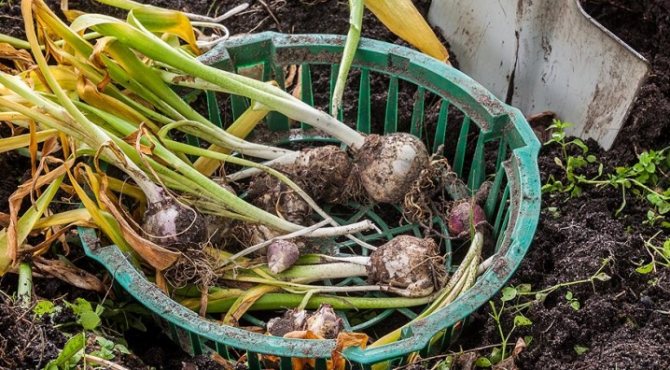

Let's summarize
Thus, to enjoy the vibrant colors of these wonderful plants, it is imperative to provide an adequate dormant period for the bulbs. When forcing, temperature and appropriate humidity are very important. Optimal lighting and proper feeding will be a great help for you to delight your bulbs with beautiful flowers.Growing perennial hyacinth is a little troublesome, but it will delight you with its magnificent flowers for many years. But if you don't have enough time to give your bulbs a regular rest period, it is best to plant annual bulbs and then throw them away safely.


